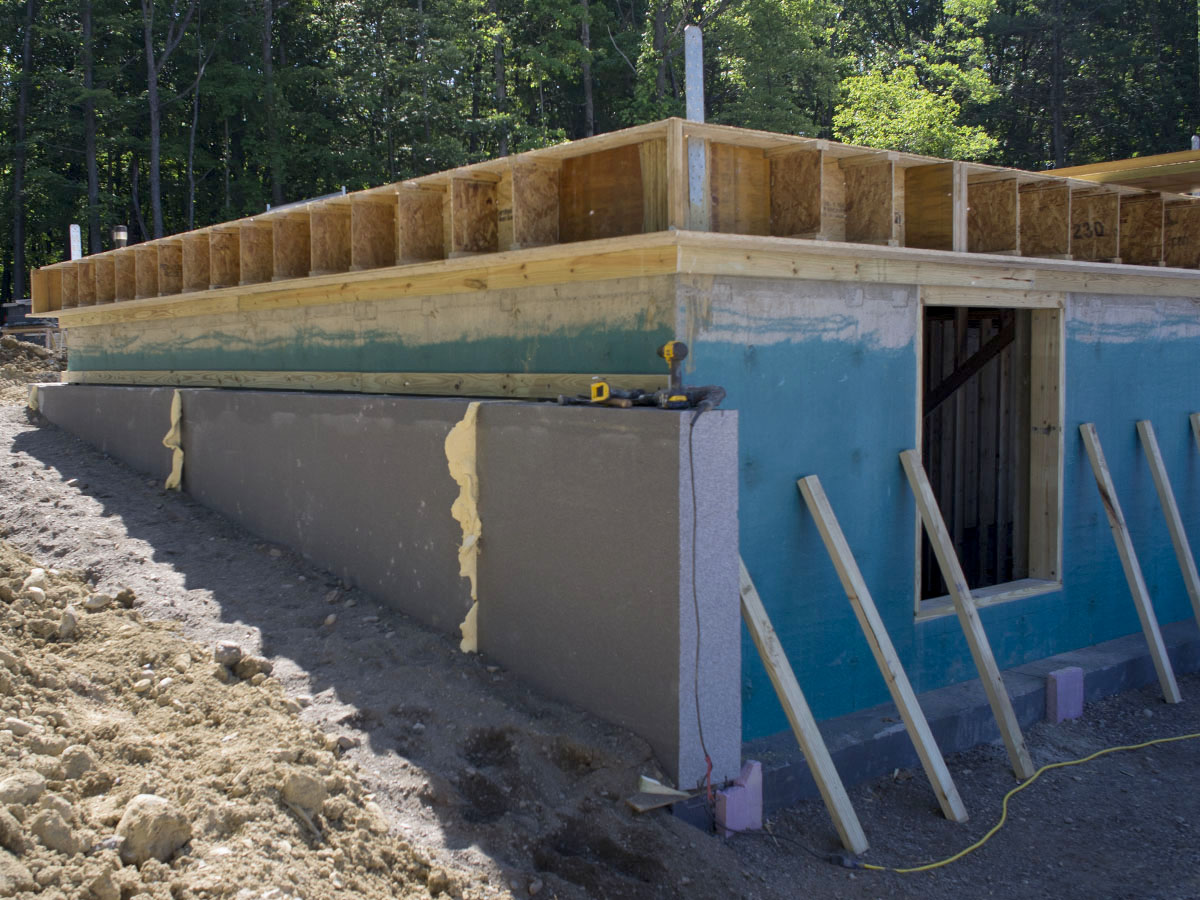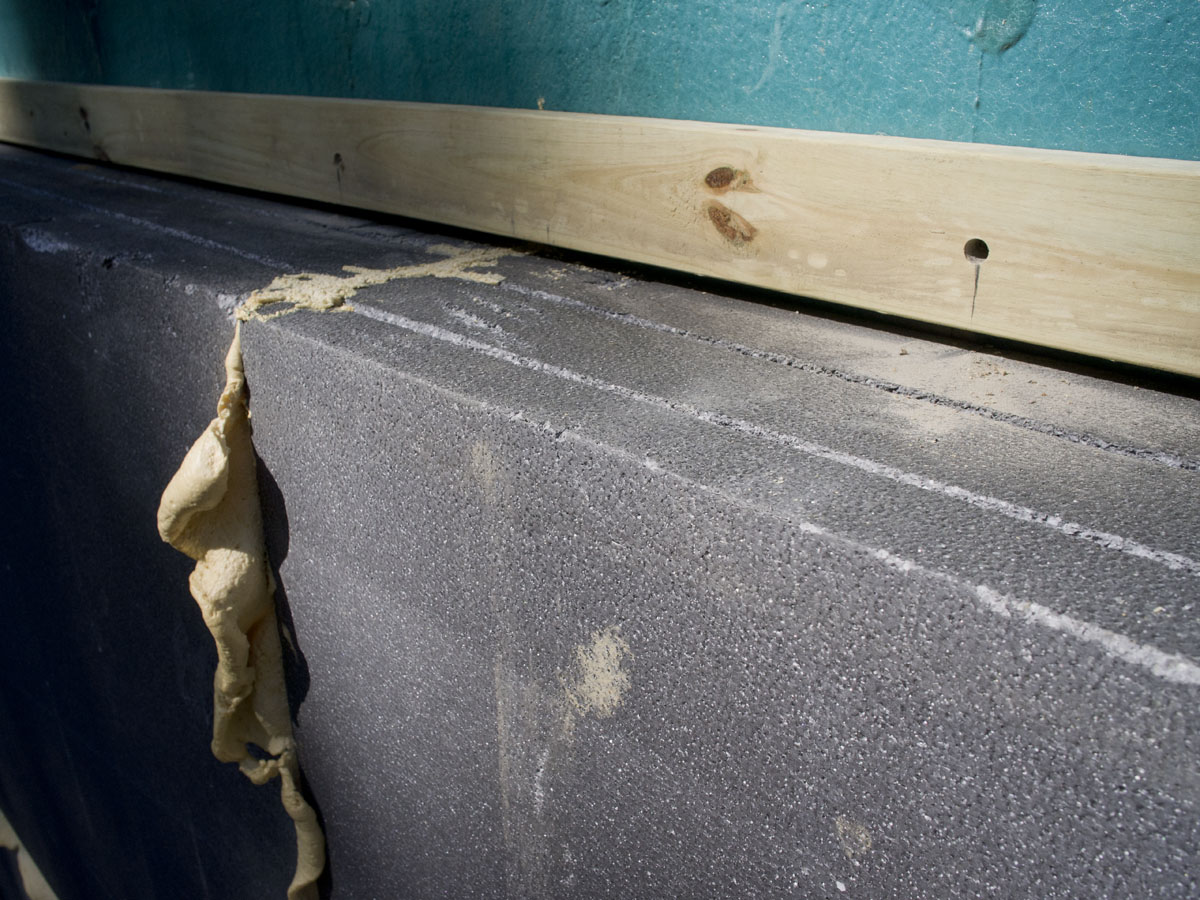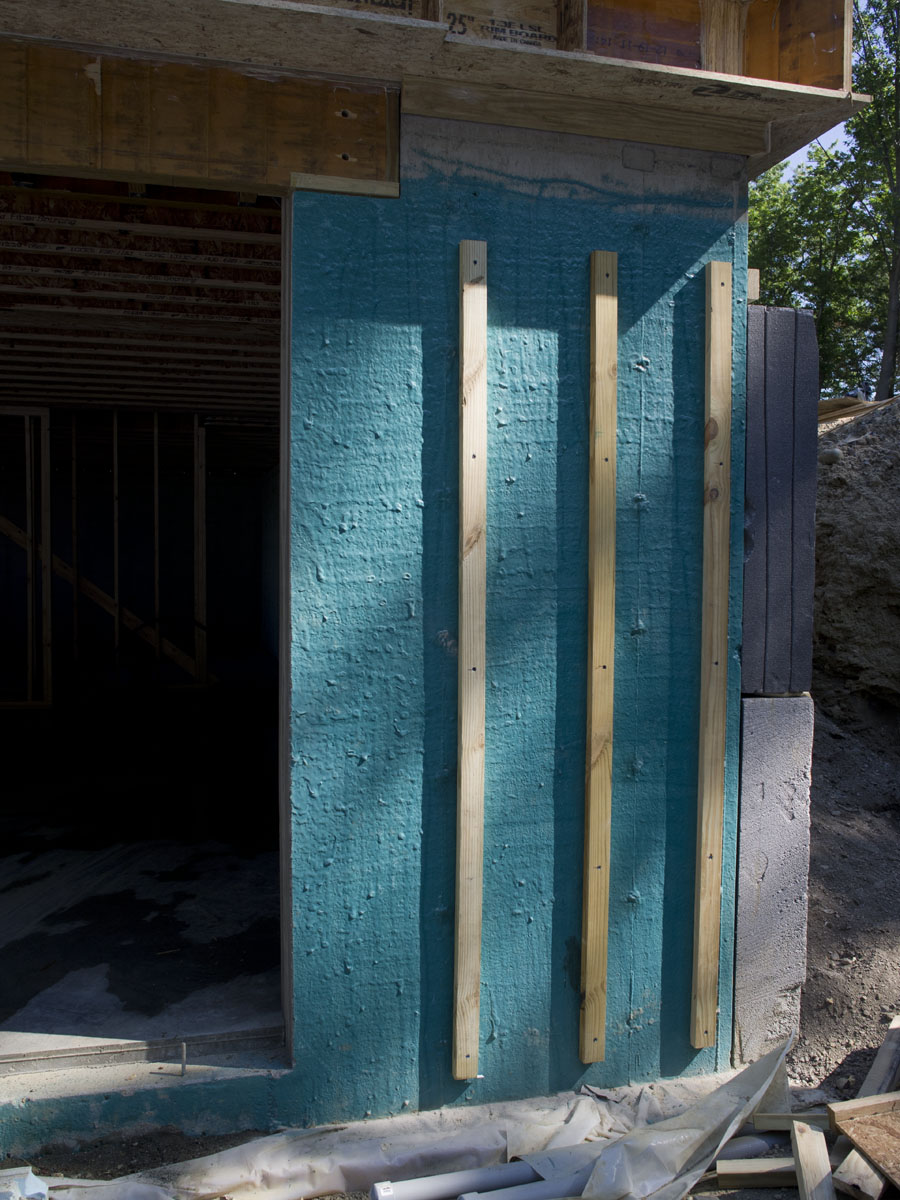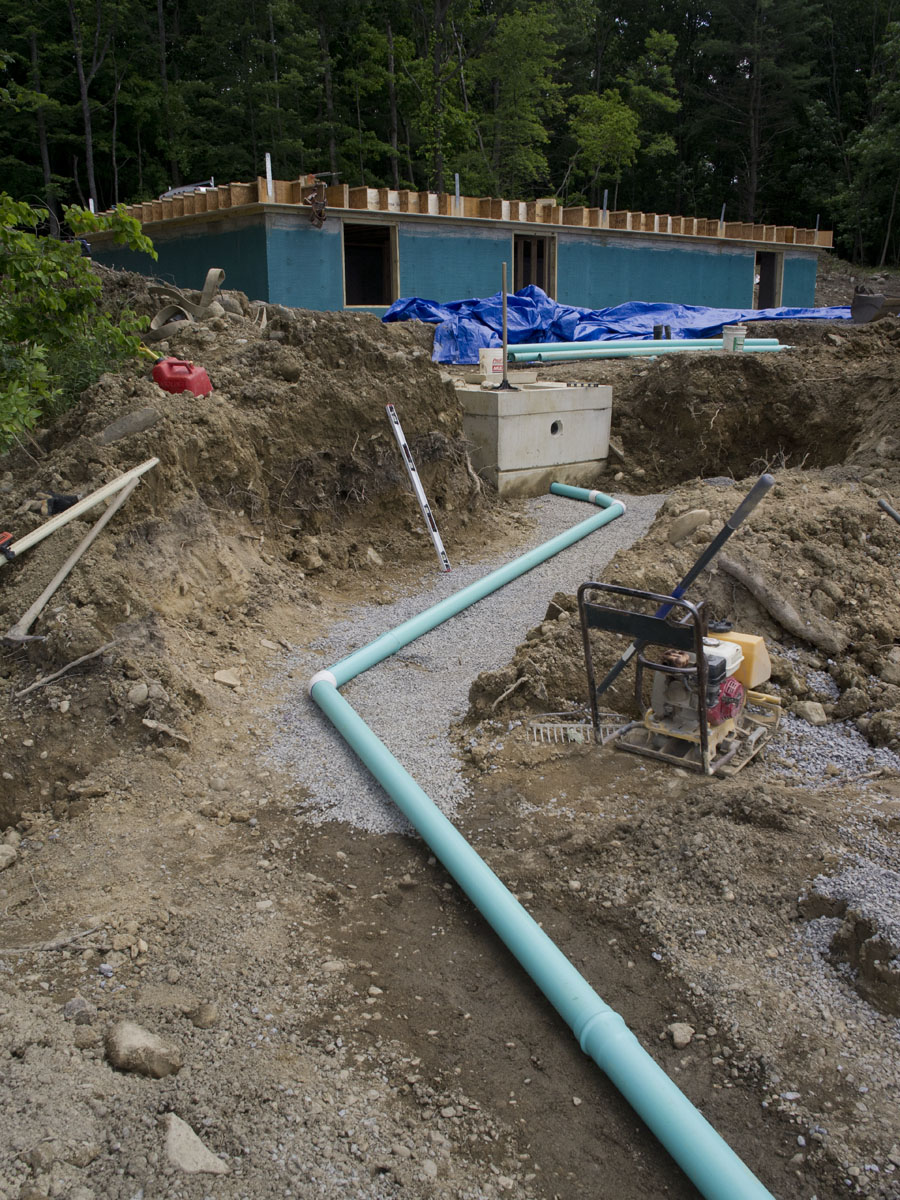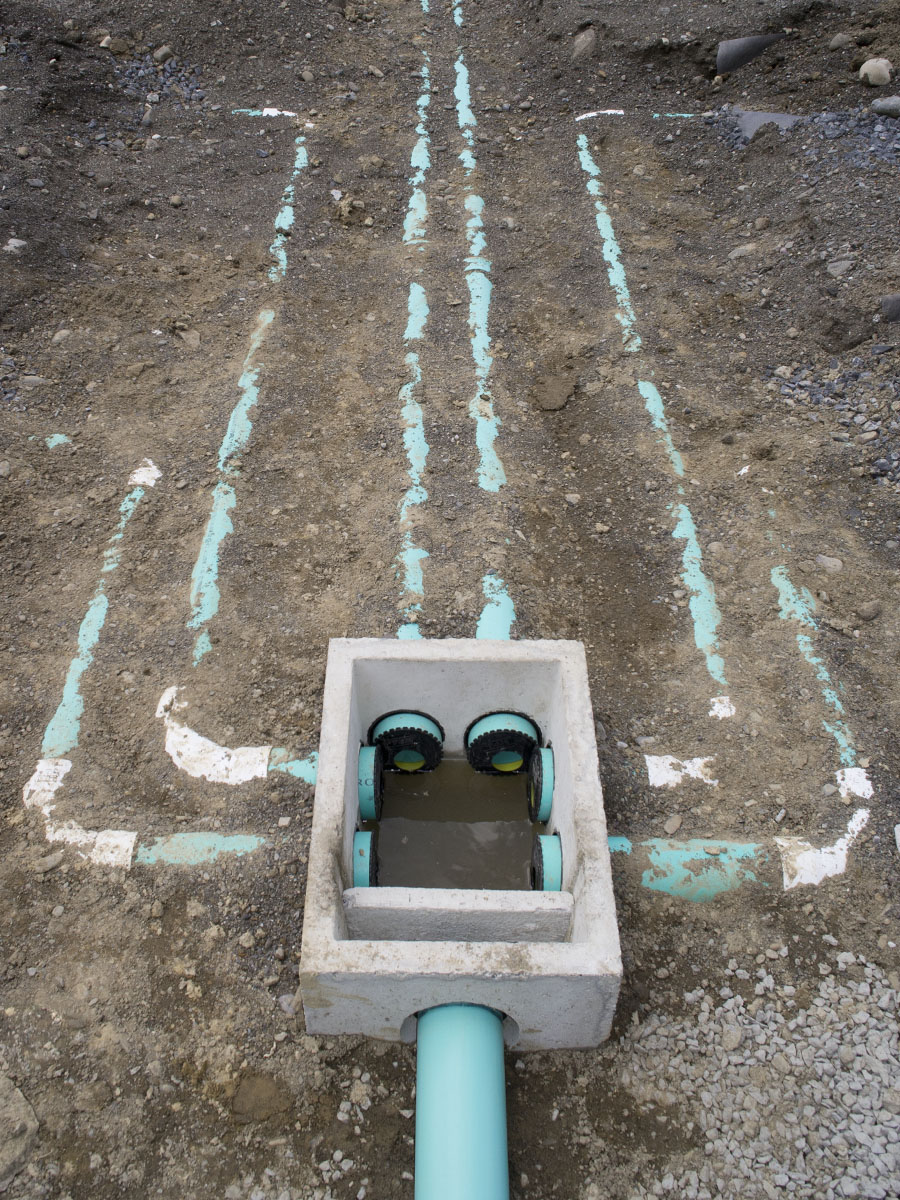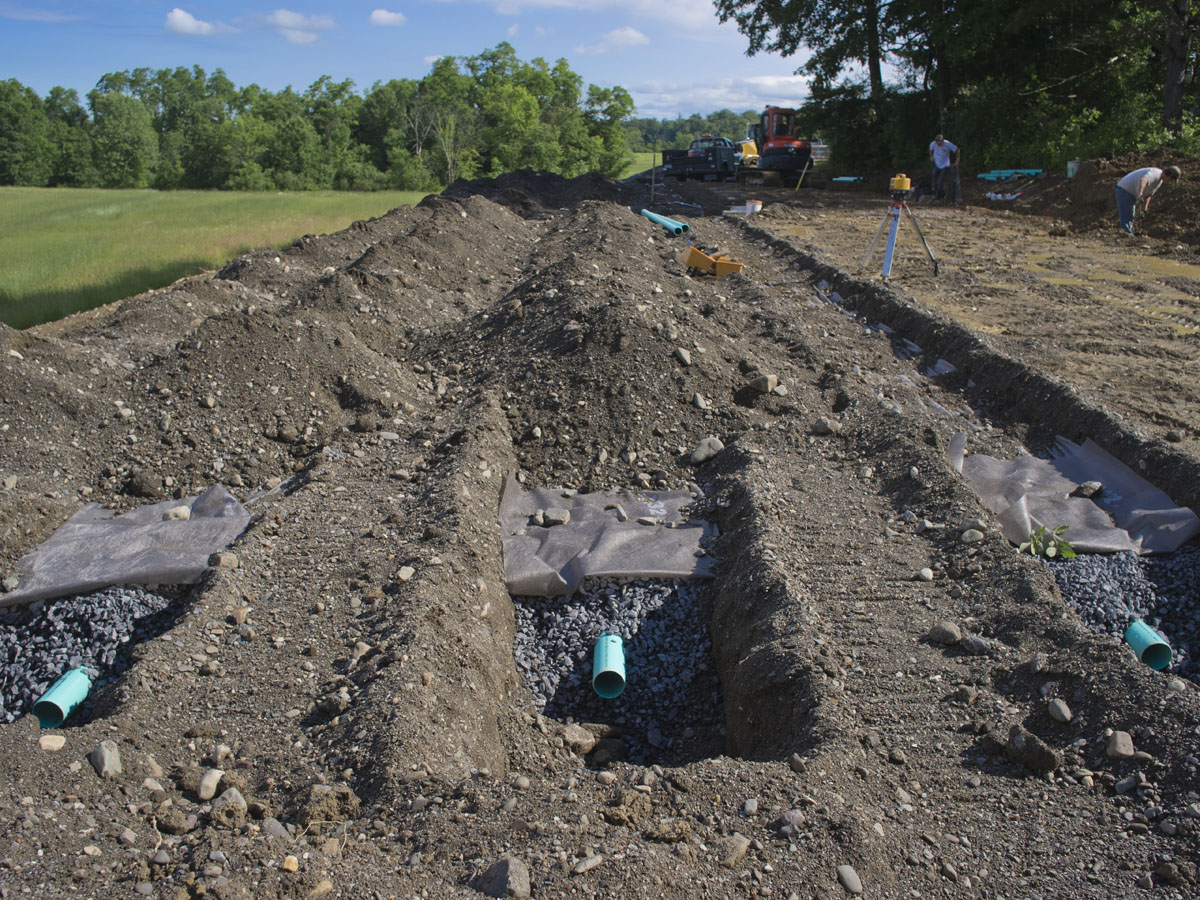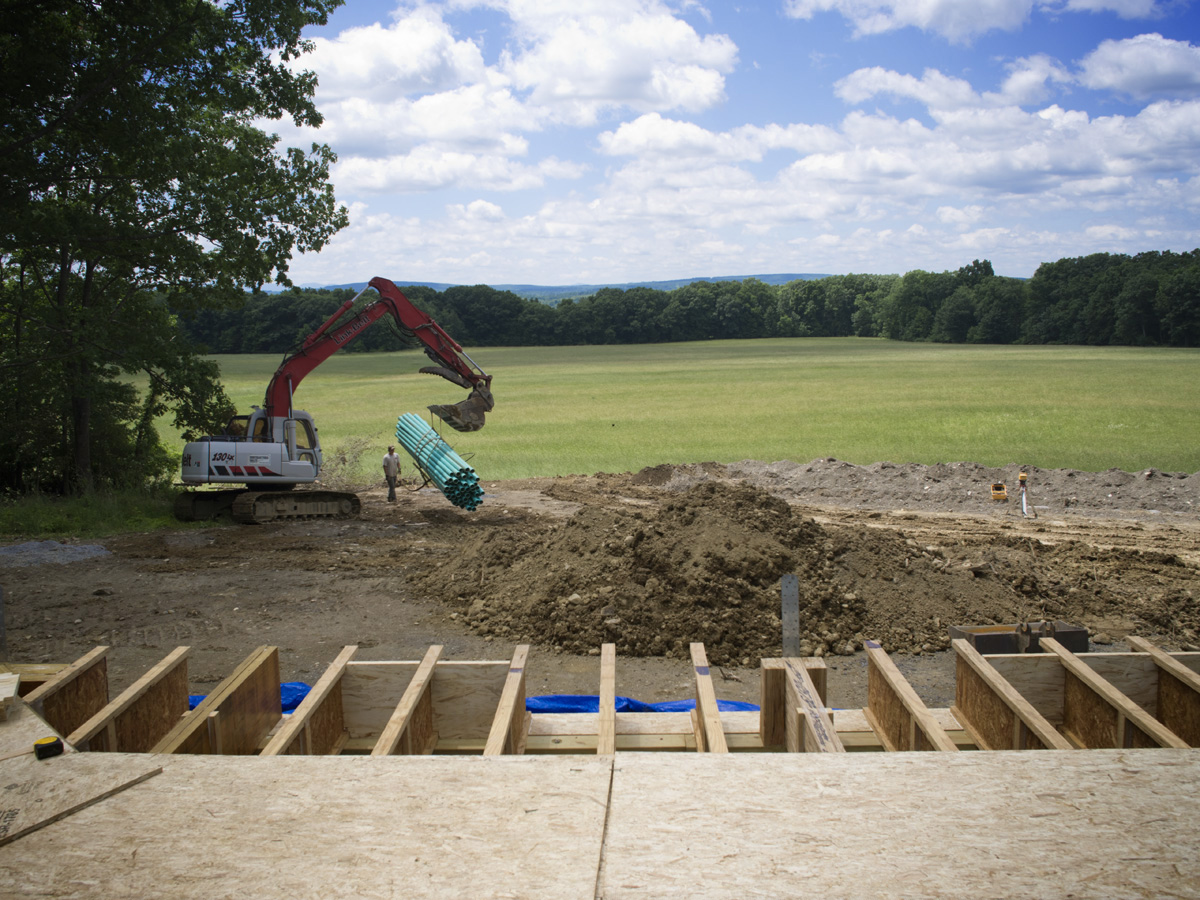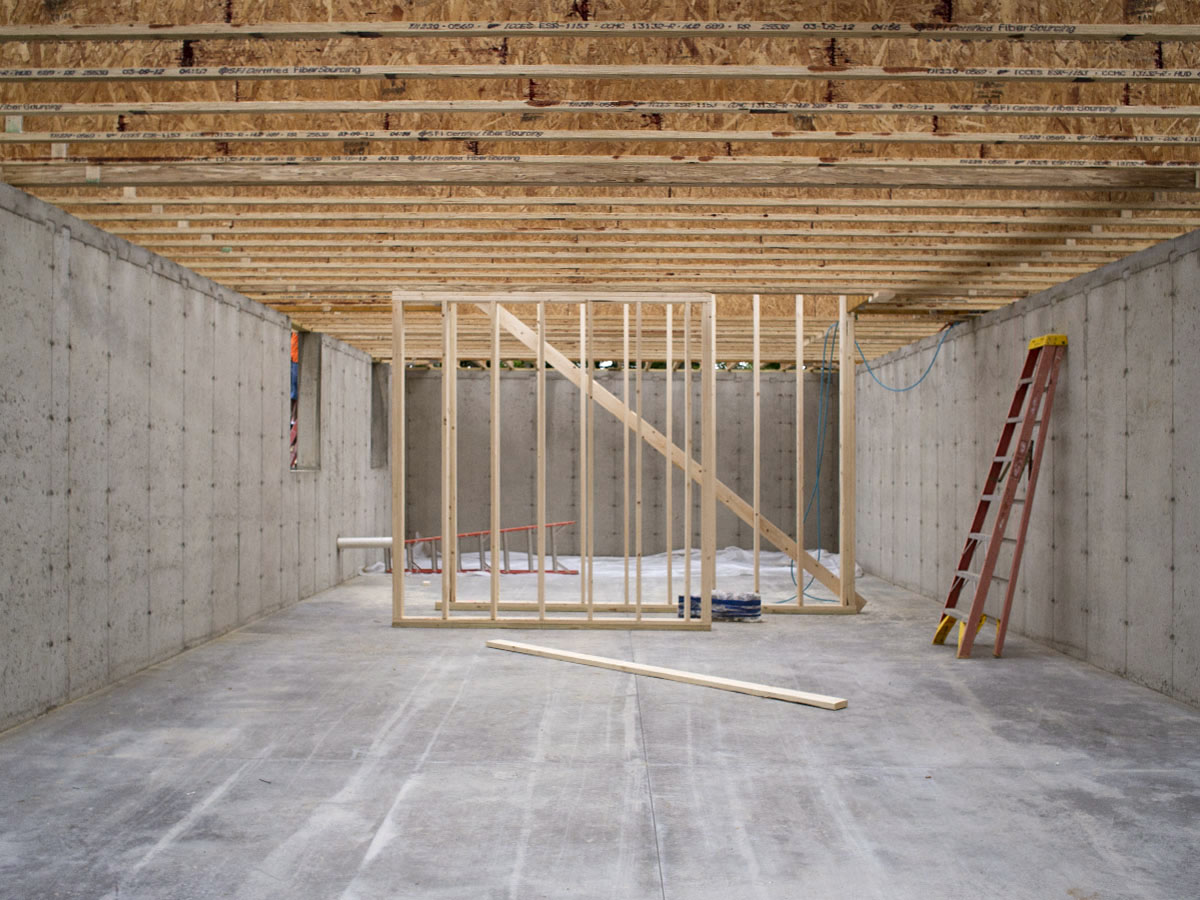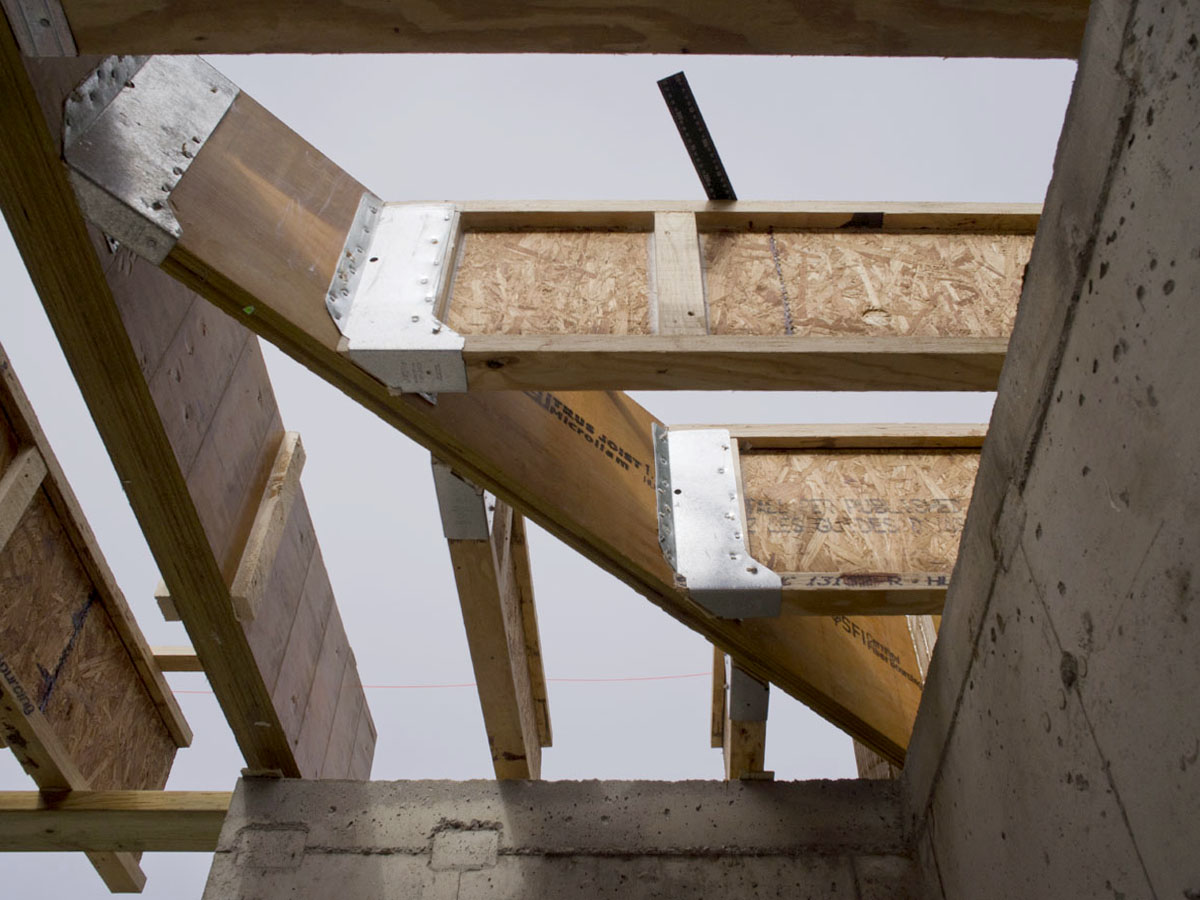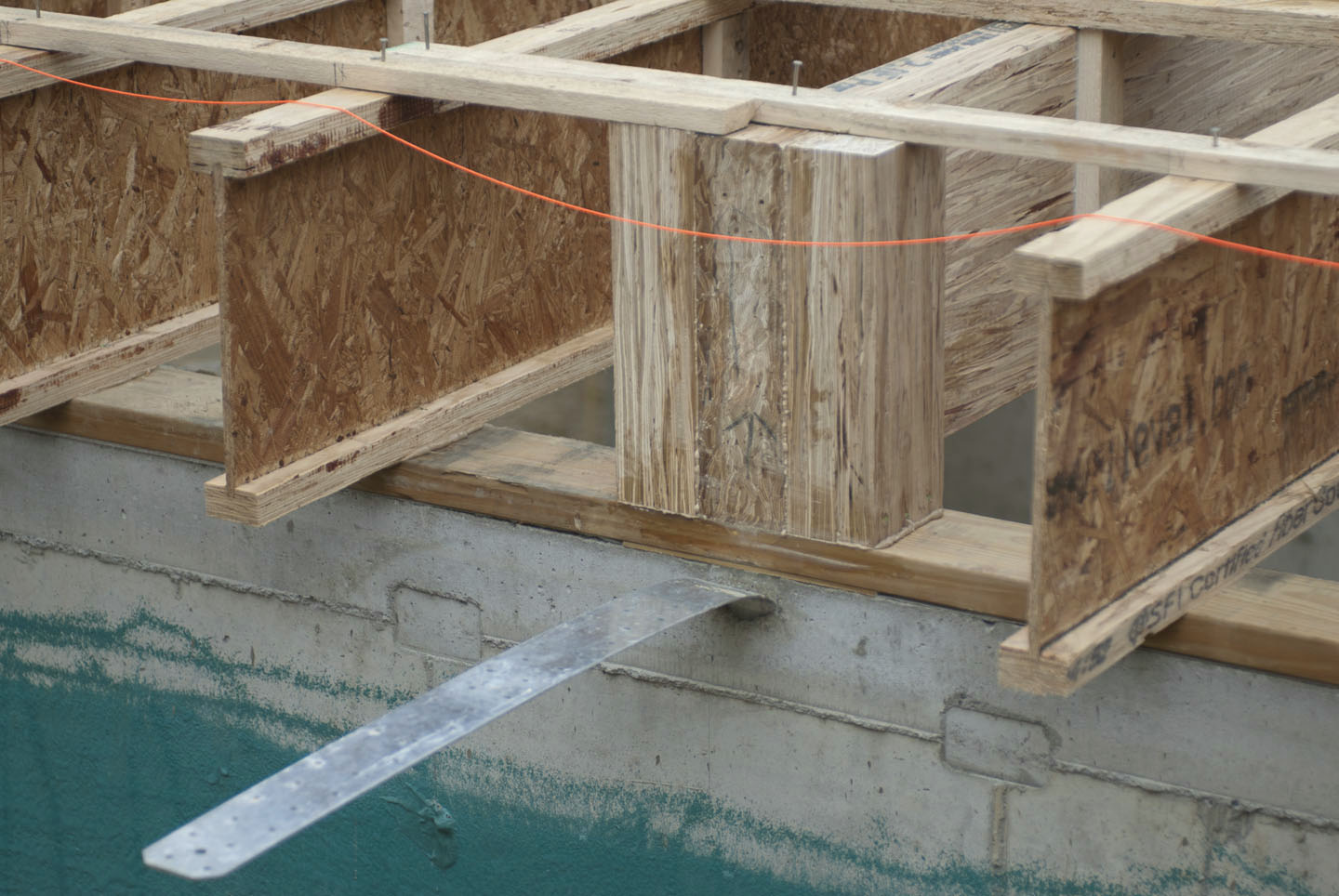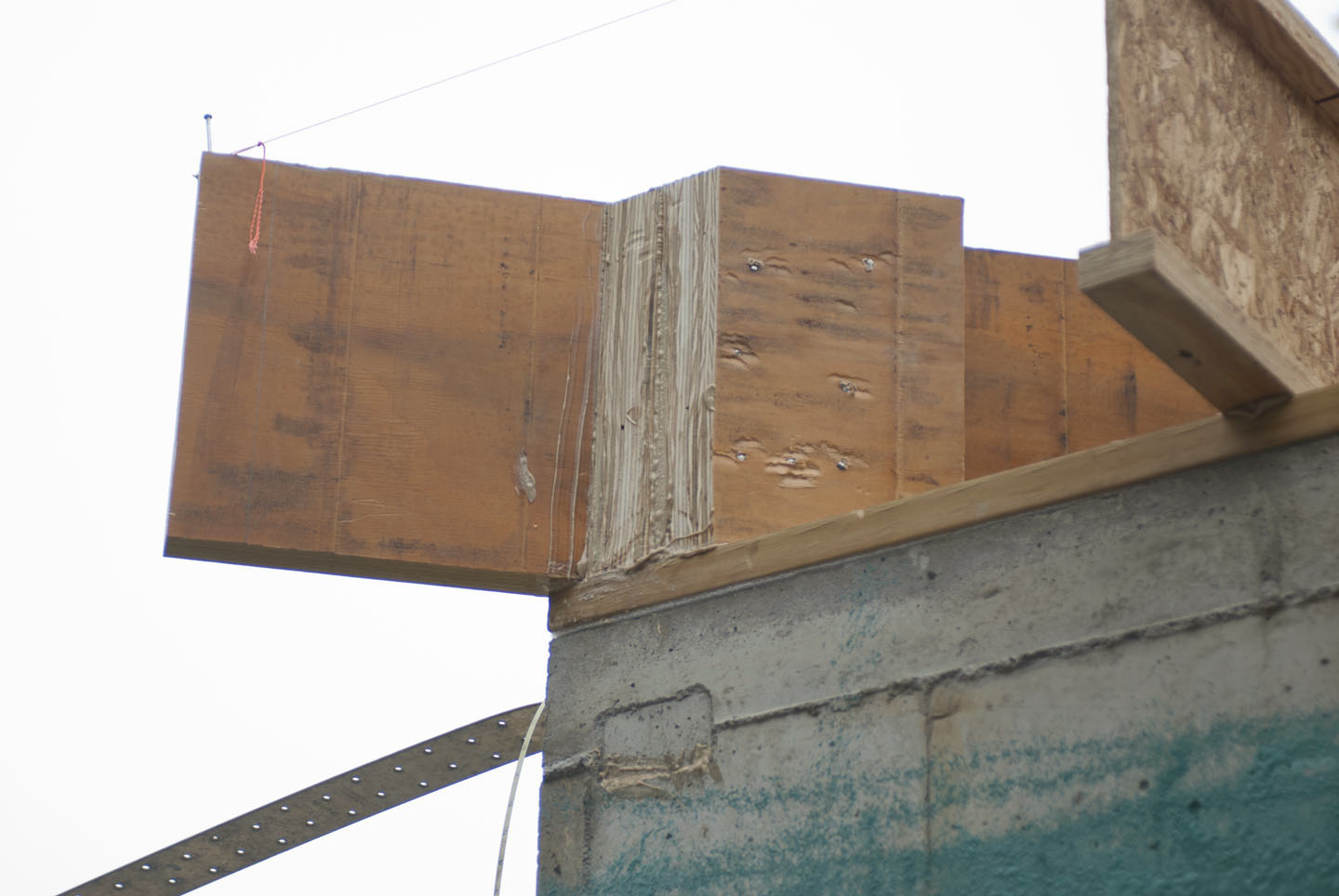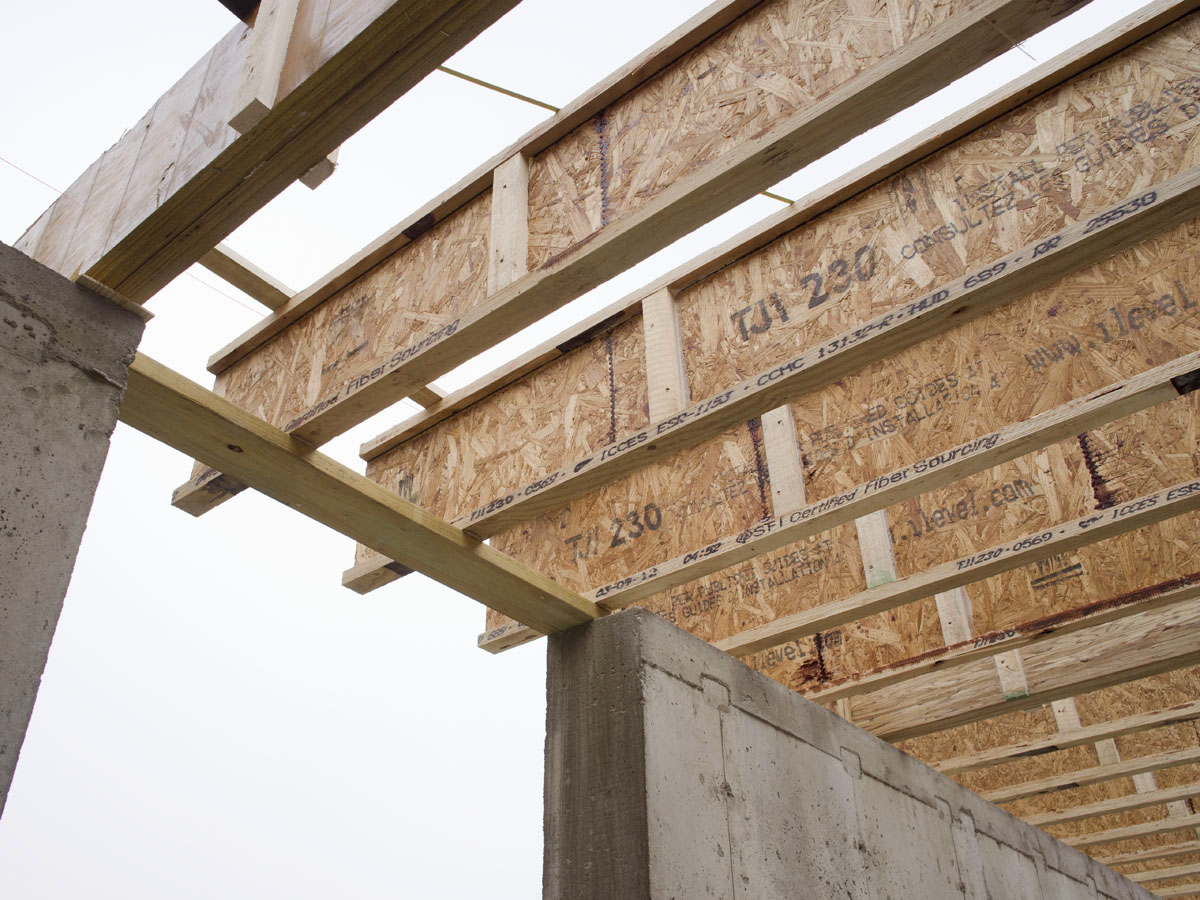
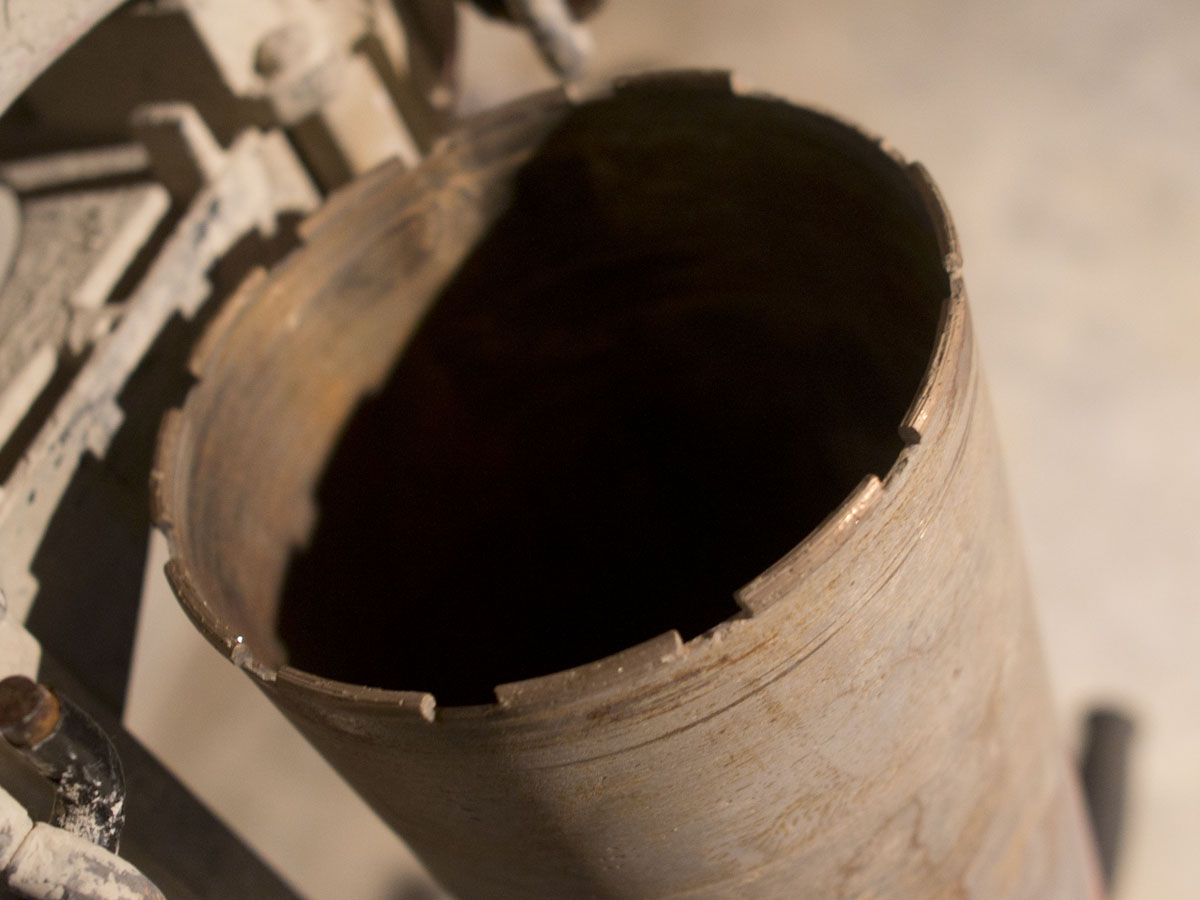
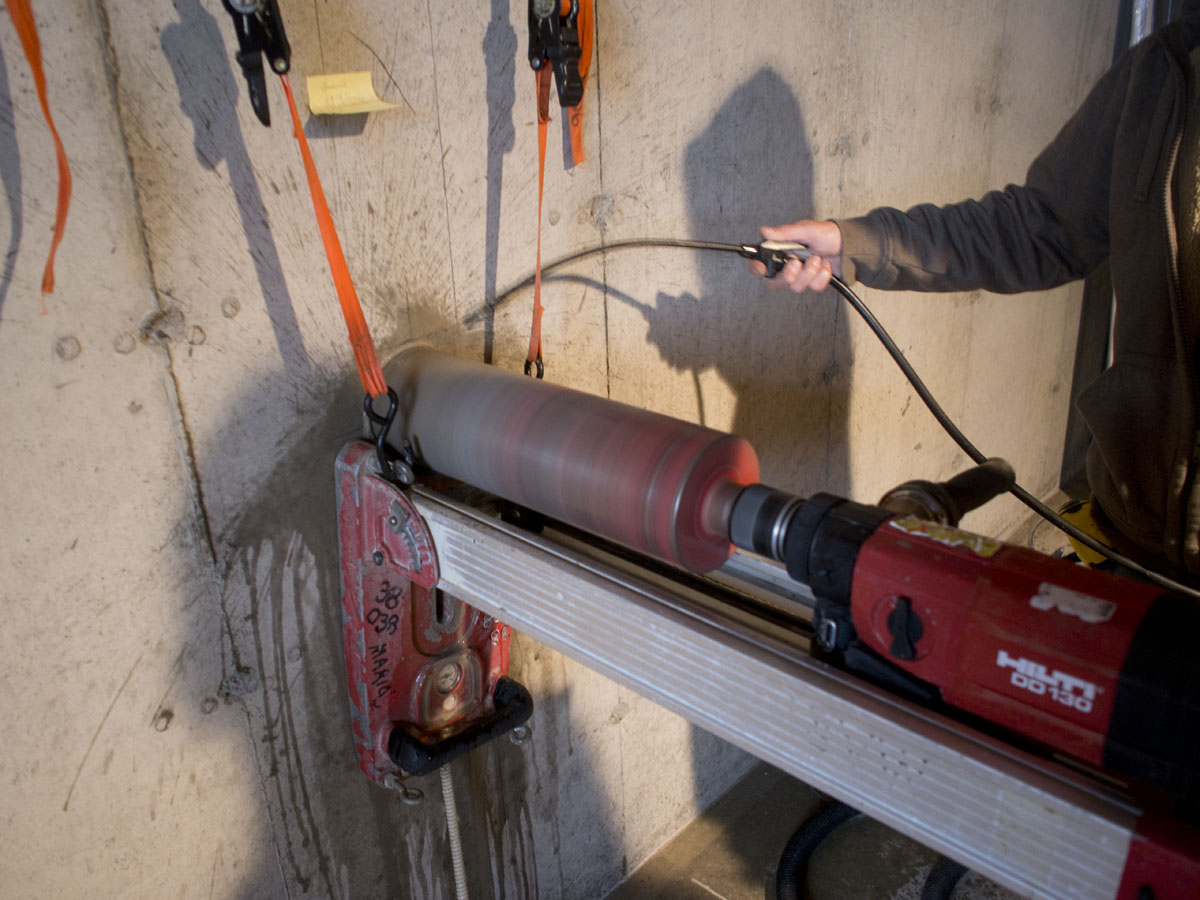
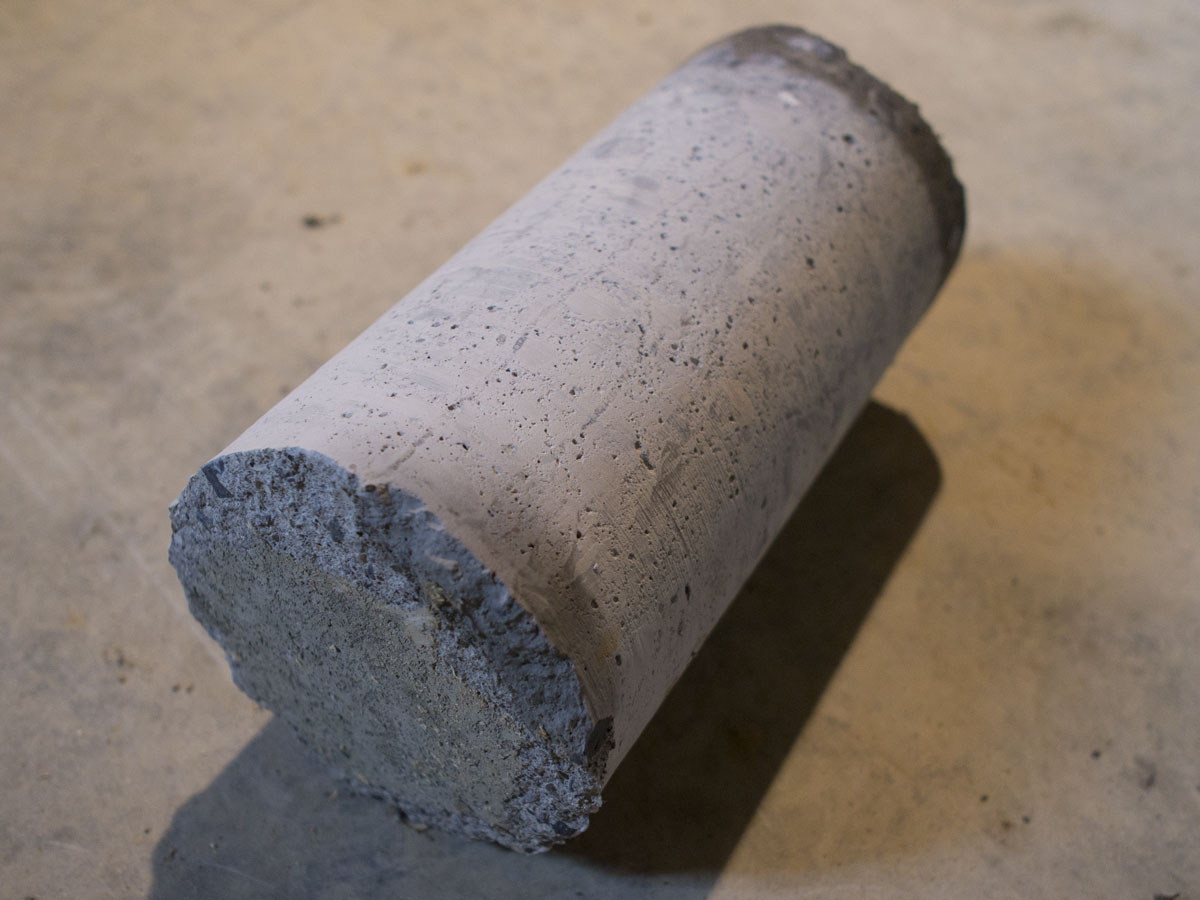

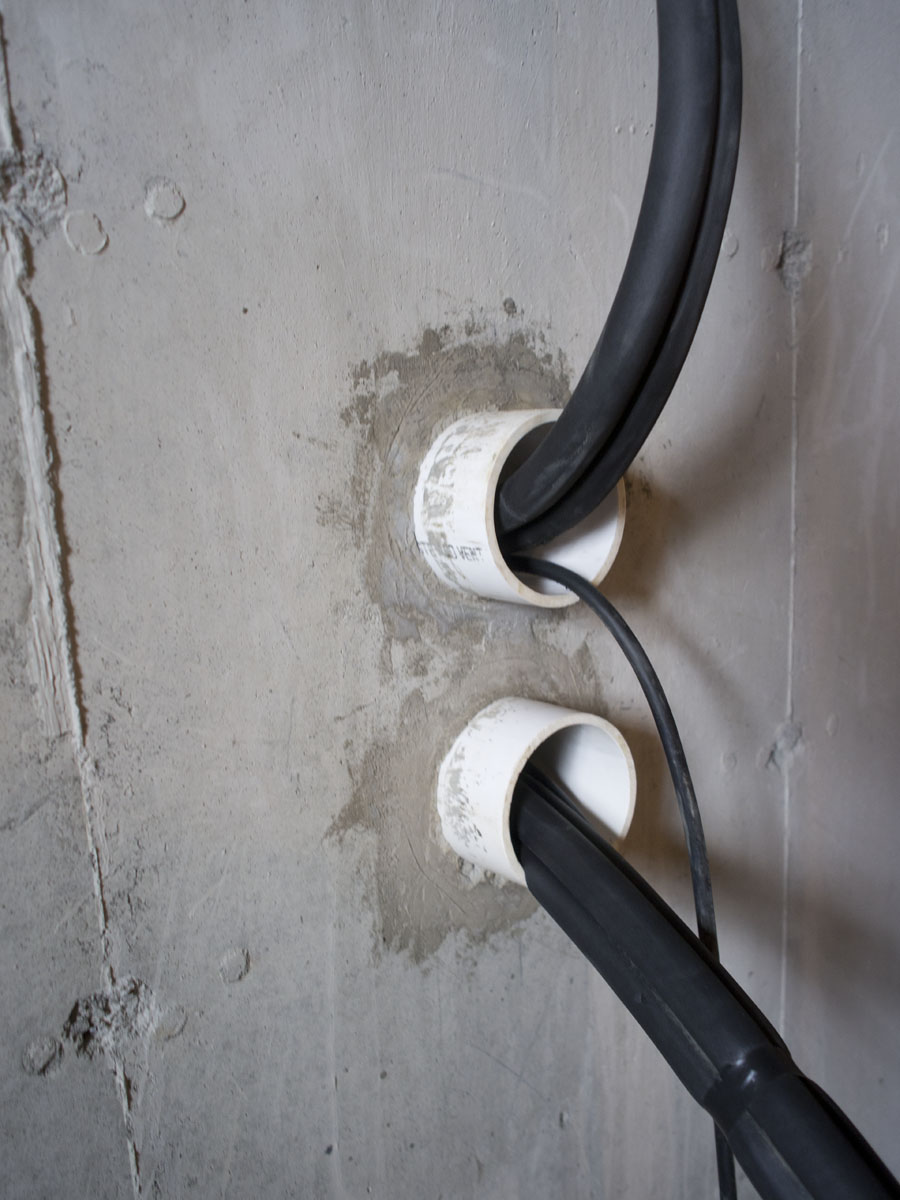
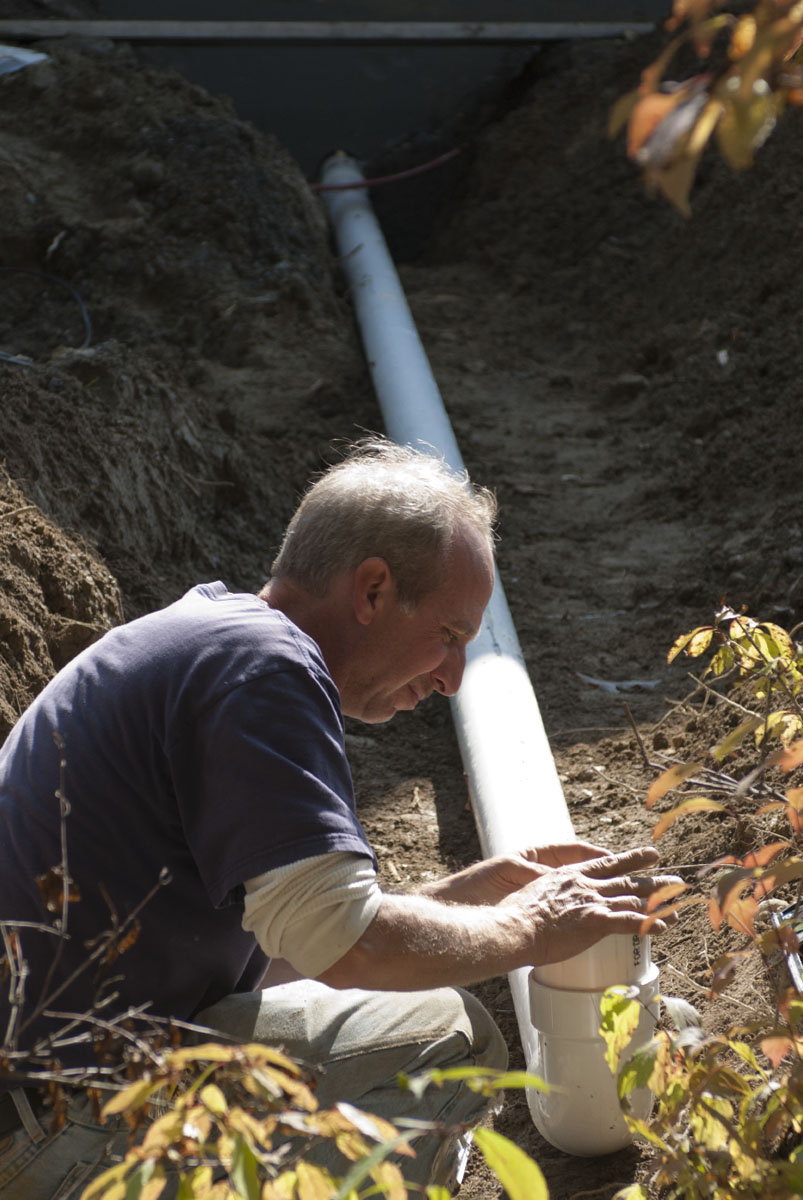
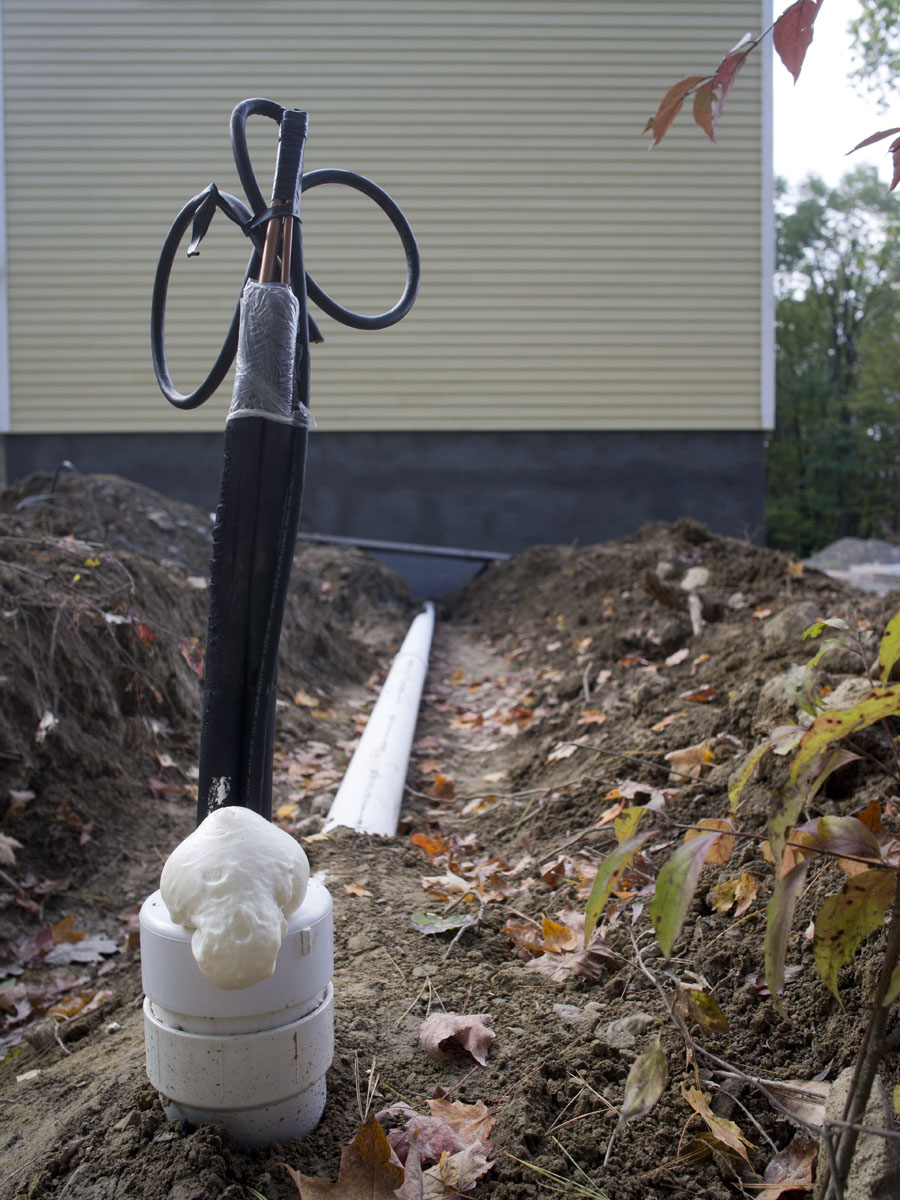 Unfortunately, the refrigeration tubing along with its thick insulation won’t fit through the 2-inch conduits that are neatly buried under the foundation to emerge inside. The work-around is to punch two 4-inch PVC conduits through the the North wall below grade. And to seal them thoroughly. The tubing to the mini splits will run through the fatter conduits.
Unfortunately, the refrigeration tubing along with its thick insulation won’t fit through the 2-inch conduits that are neatly buried under the foundation to emerge inside. The work-around is to punch two 4-inch PVC conduits through the the North wall below grade. And to seal them thoroughly. The tubing to the mini splits will run through the fatter conduits.
Category Archives: 1. DIG TO DECK
Second floor framing
Applying spray foam insulation
 Closed cell spray foam insulation is applied to fill the gaps between the deck i-beams.
Closed cell spray foam insulation is applied to fill the gaps between the deck i-beams.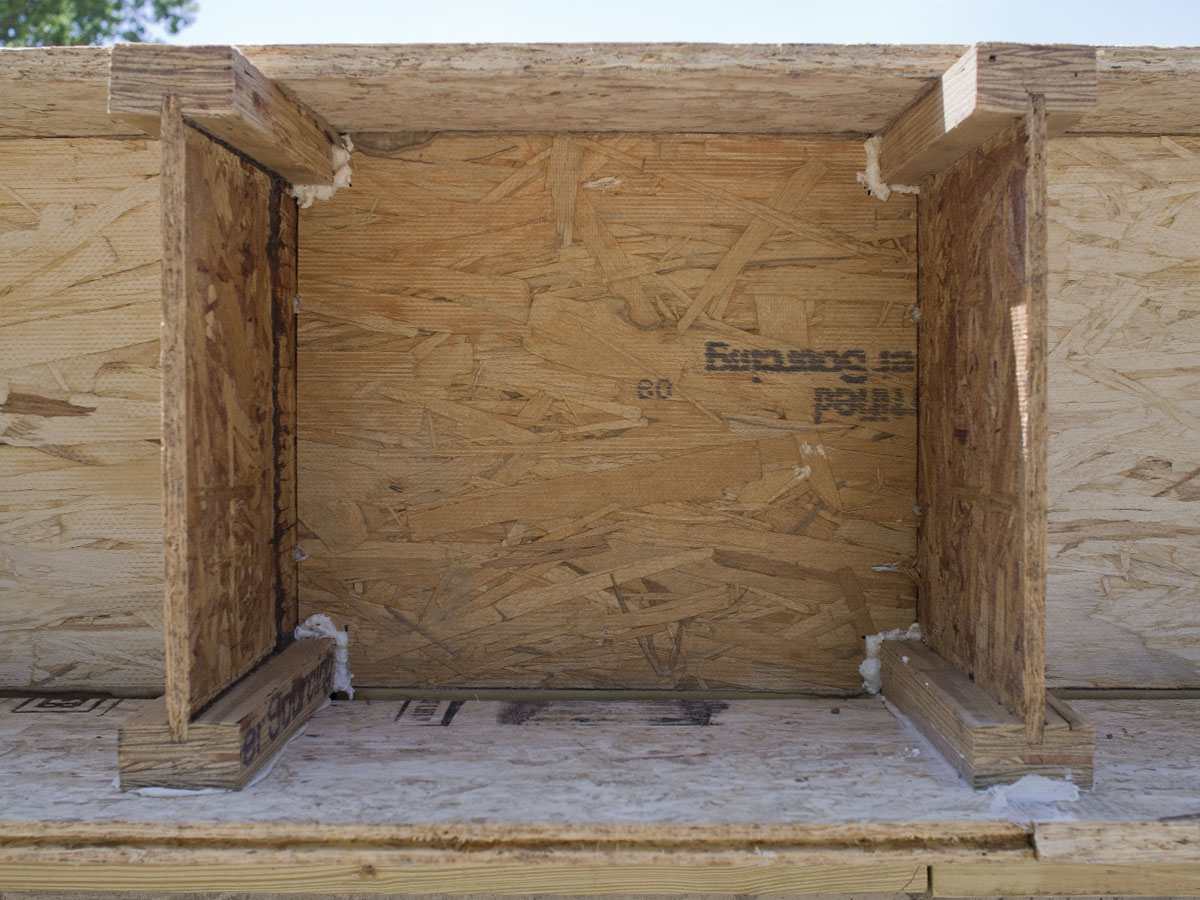 A smaller foam application pre-fills gaps.
A smaller foam application pre-fills gaps.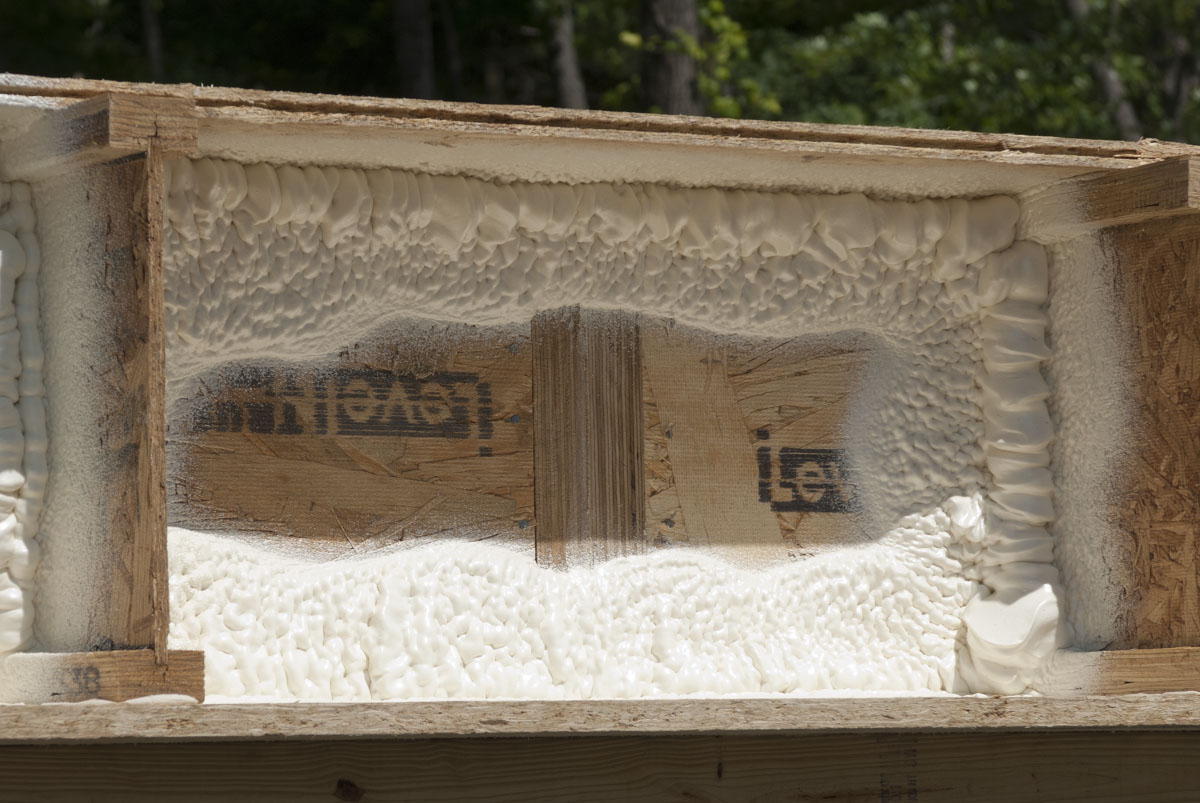 The first pass with the sprayer fills the corners helping to make the insulation airtight.
The first pass with the sprayer fills the corners helping to make the insulation airtight.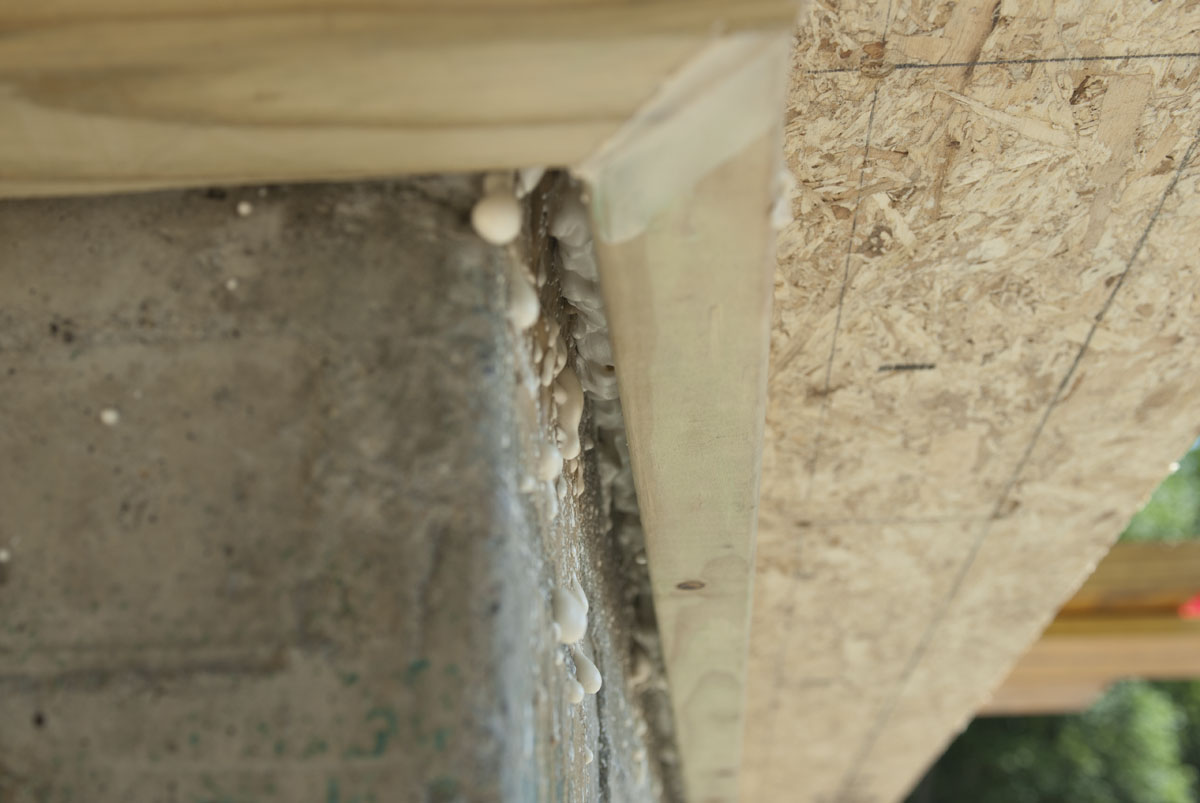 Spray foam expands to fill the gap between the overhanging deck soffit and the foundation. This helps create an airtight seal between the deck and the foundation.
Spray foam expands to fill the gap between the overhanging deck soffit and the foundation. This helps create an airtight seal between the deck and the foundation.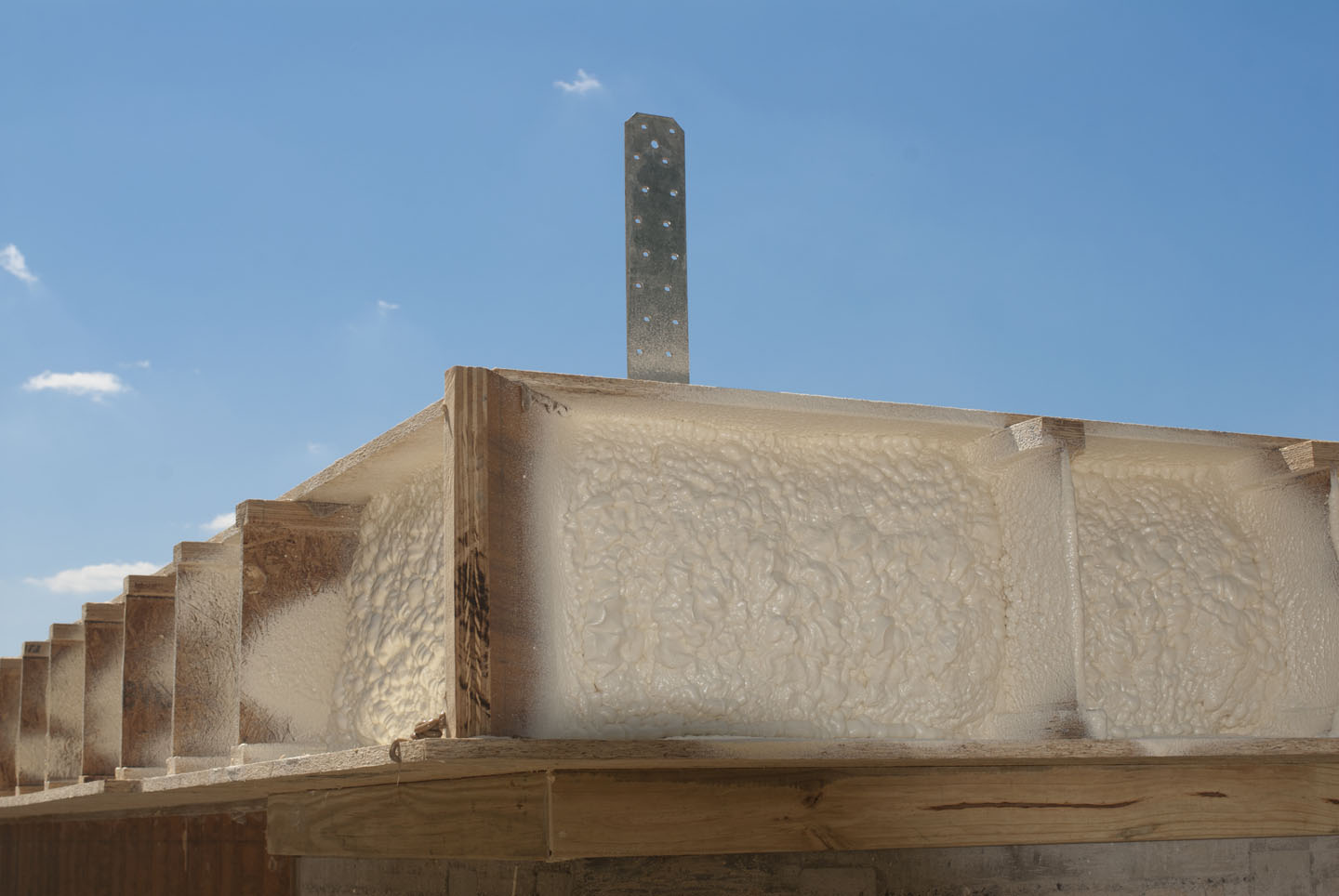 The spray foam curing in place after the first application. Two applications were made on different days to fill out the thickness of the cavity.
The spray foam curing in place after the first application. Two applications were made on different days to fill out the thickness of the cavity.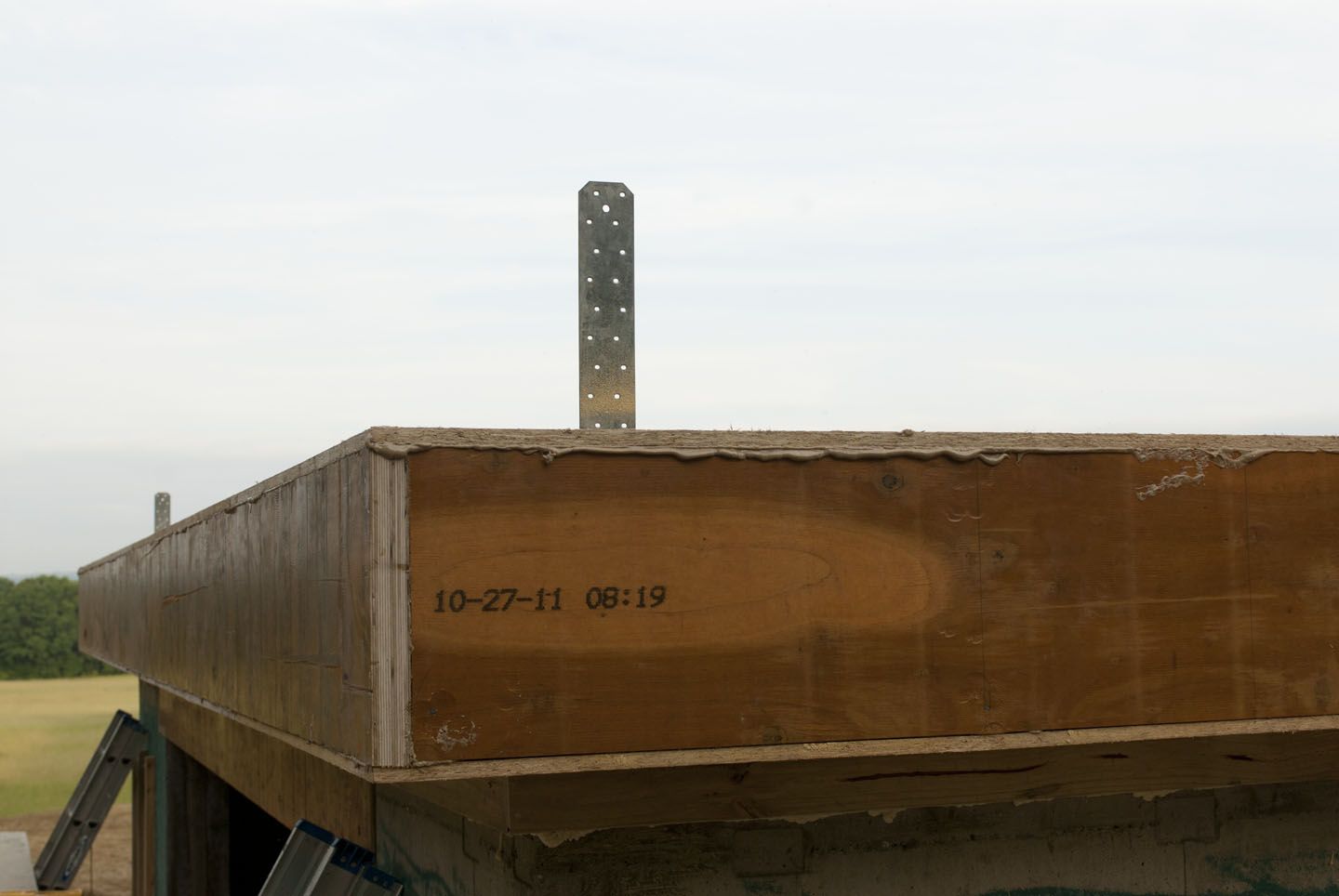 LVL’s are glued, screwed and sealed in place to finish the deck perimeter.
LVL’s are glued, screwed and sealed in place to finish the deck perimeter.
Attaching Neopor foam blocks above grade
Our fabulous new septic field is an engineering marvel
Deck framing details
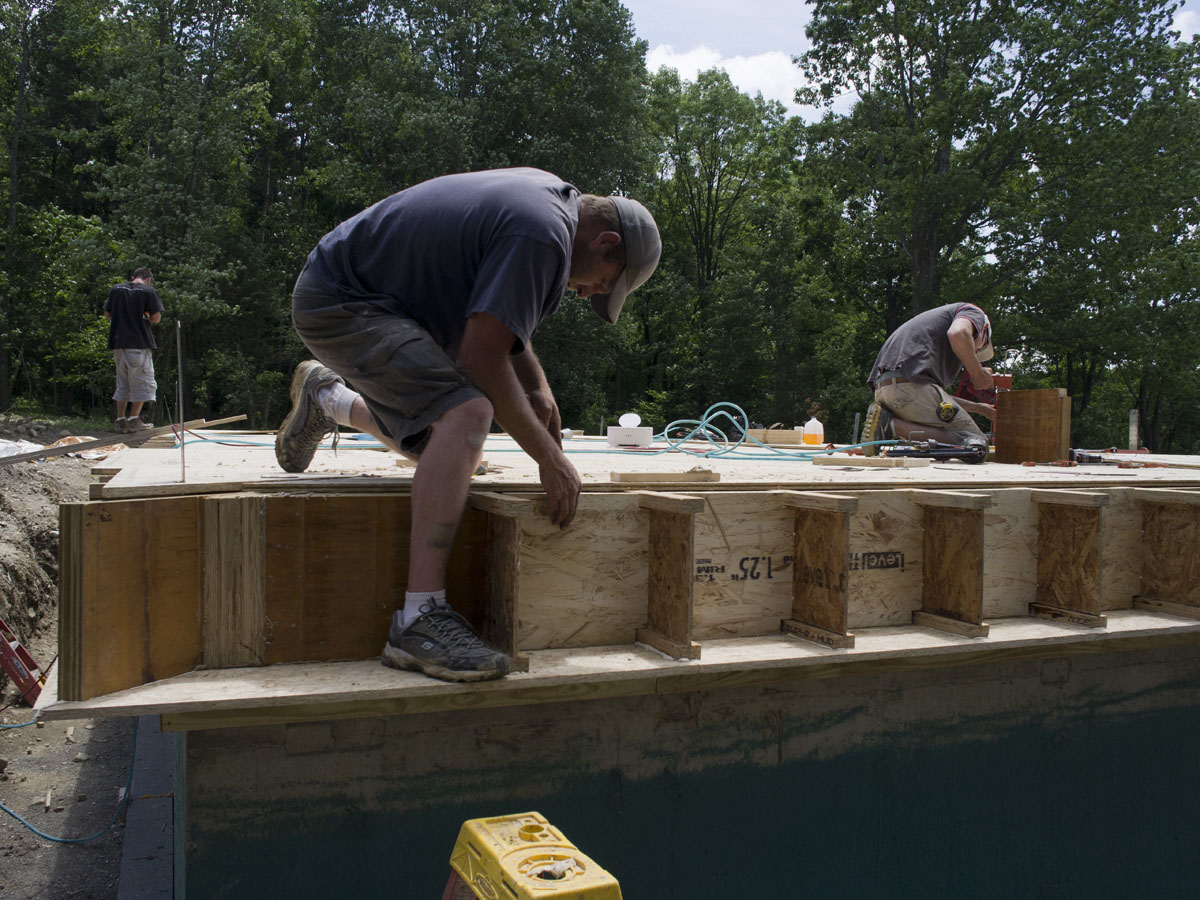 Blocking between the i-beams to provide structural reinforcement and air sealing above the sill and below the floor decking.
Blocking between the i-beams to provide structural reinforcement and air sealing above the sill and below the floor decking.
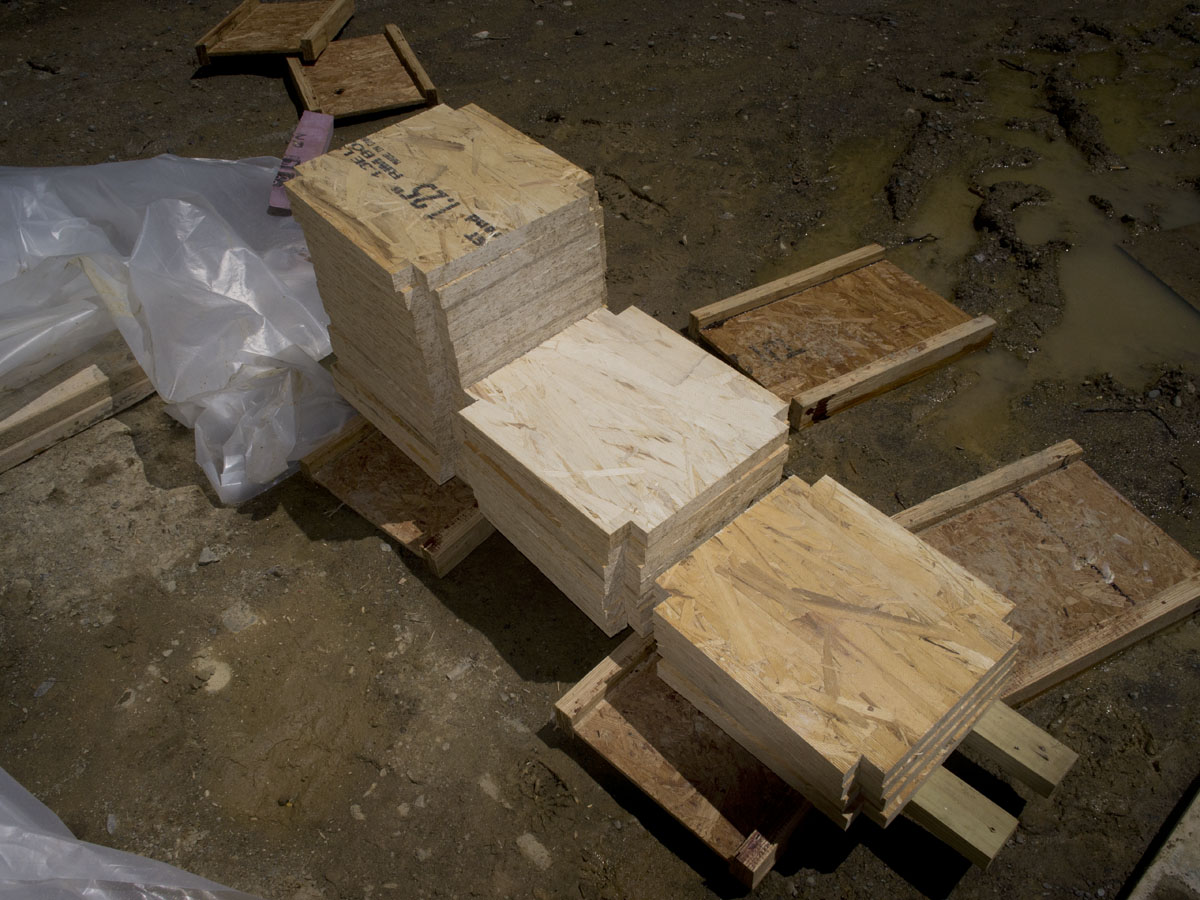 Blocking boards pre-cut in quantity.
Blocking boards pre-cut in quantity.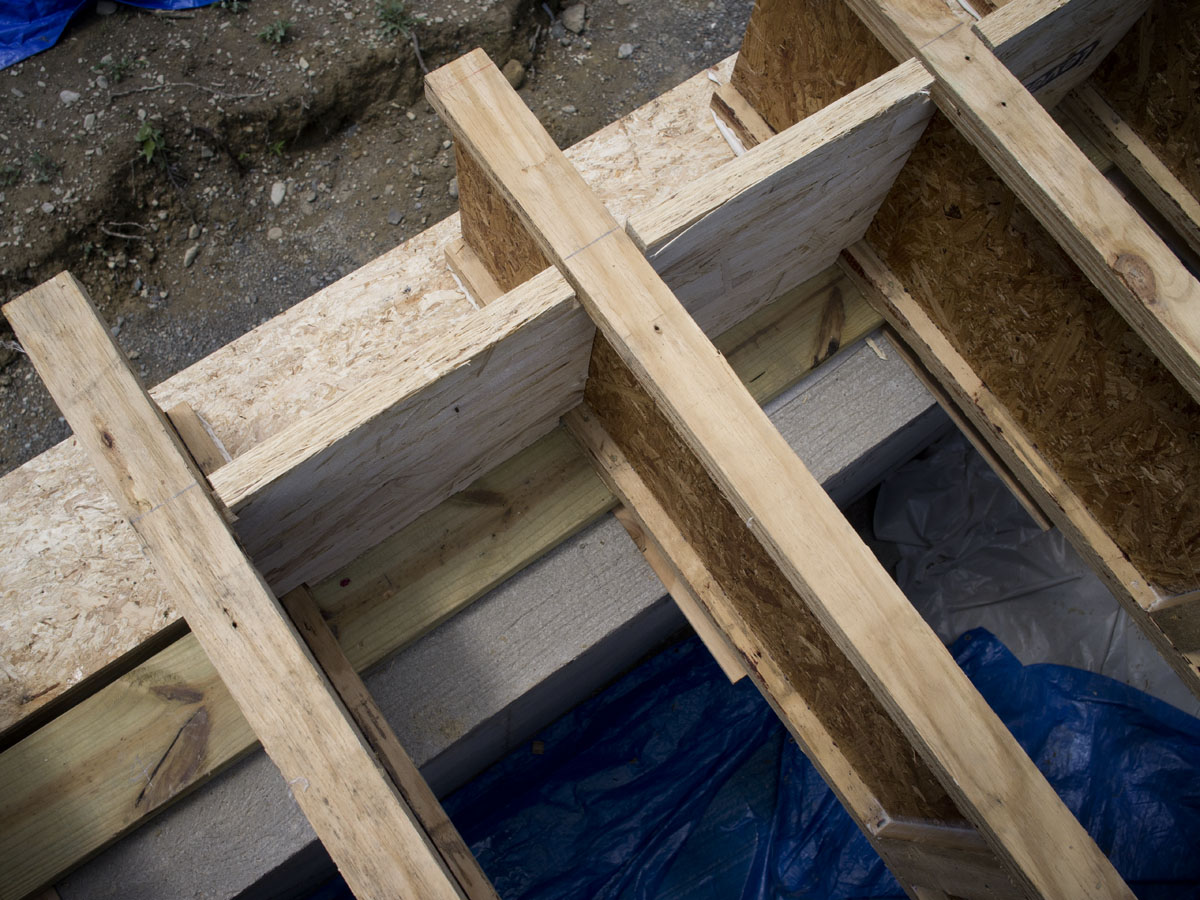 Blocking installed between the TGI i-beams.
Blocking installed between the TGI i-beams. Reinforced blocking around glulam support base.
Reinforced blocking around glulam support base.
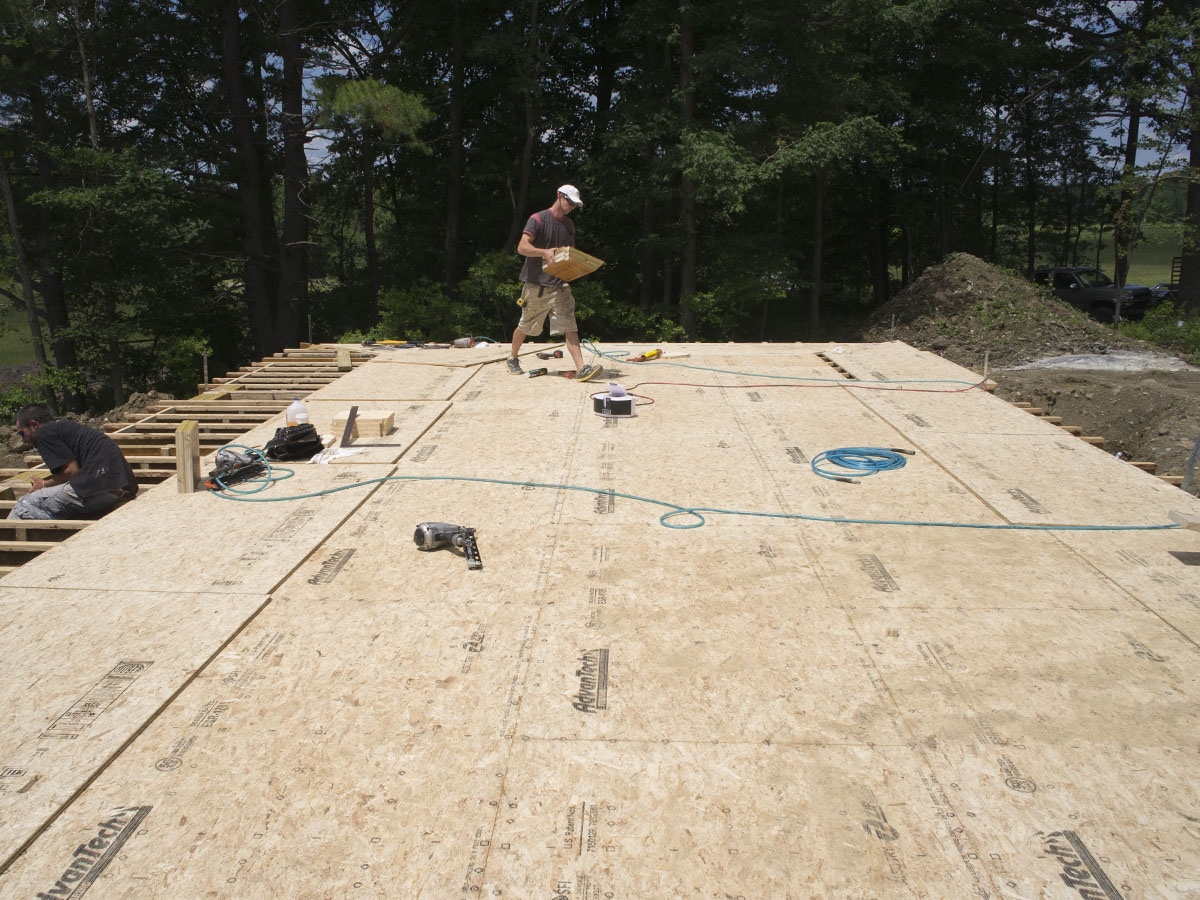 3/4″ Avantech flooring glued and screwed in place.
3/4″ Avantech flooring glued and screwed in place.
The deck is on
Sealing the soffit under the deck
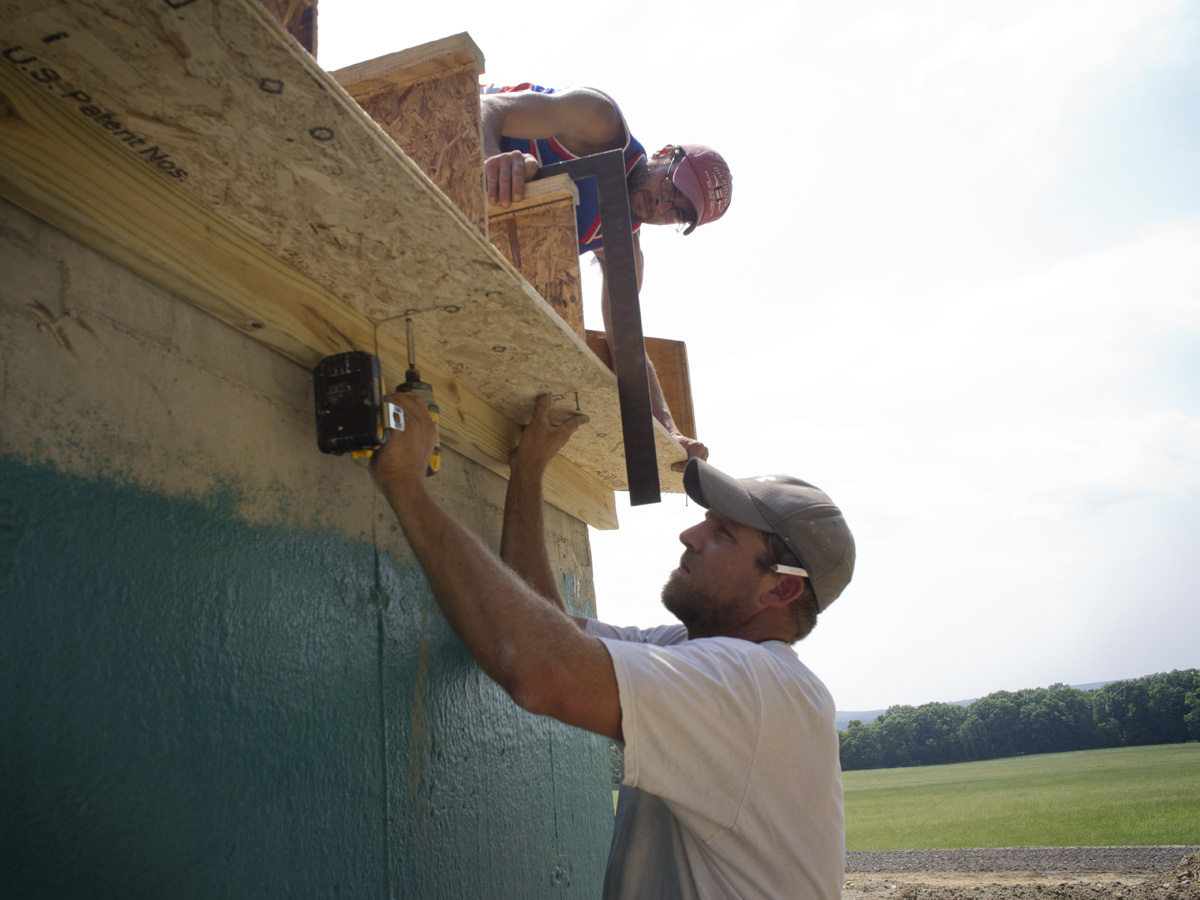 The deck extends over the edge of the foundation, overlapping the 10″ blocks of Neopor insulation that that will attach to the foundation wall below.
The deck extends over the edge of the foundation, overlapping the 10″ blocks of Neopor insulation that that will attach to the foundation wall below. 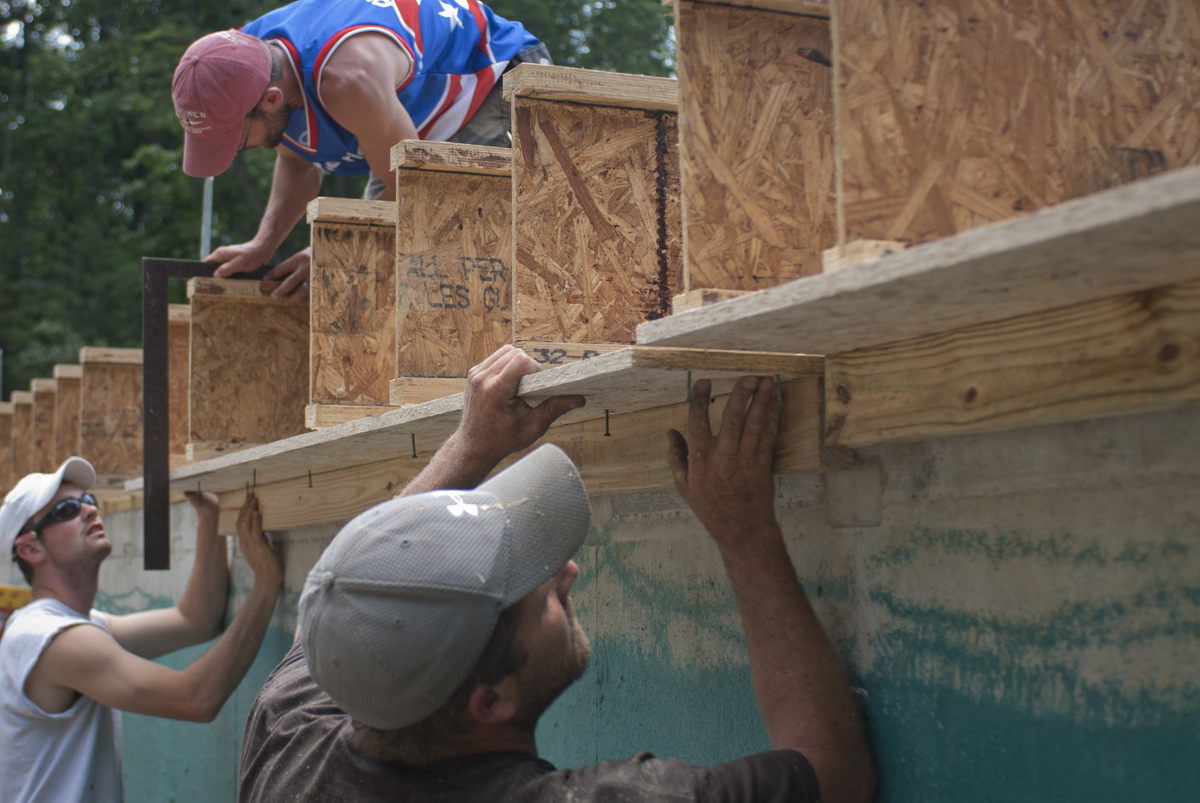 The underside of the cantilever is sealed to make the shell of the house airtight.
The underside of the cantilever is sealed to make the shell of the house airtight.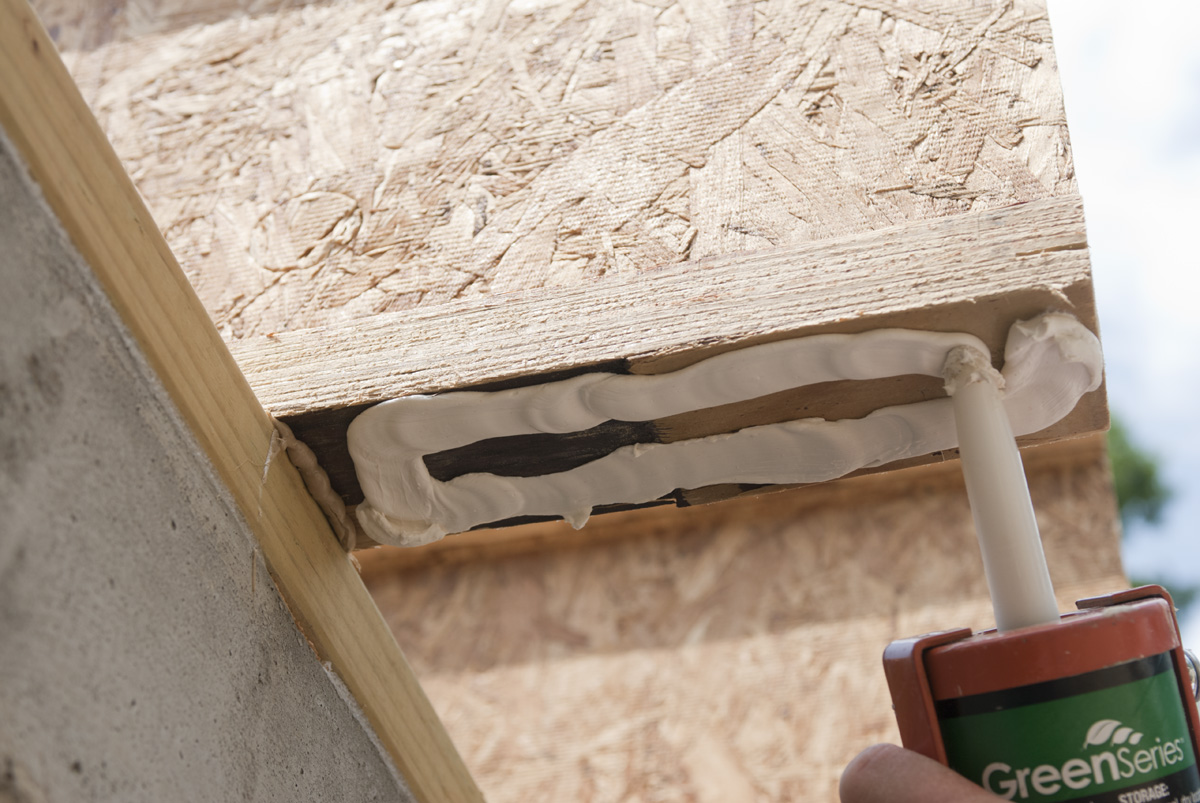 The underside of each beam is glued with OSI SF-450 adhesive. The bead runs along the perimeter of the connection point. The screws go through in the middle to avoid breaking the bead seal.
The underside of each beam is glued with OSI SF-450 adhesive. The bead runs along the perimeter of the connection point. The screws go through in the middle to avoid breaking the bead seal. 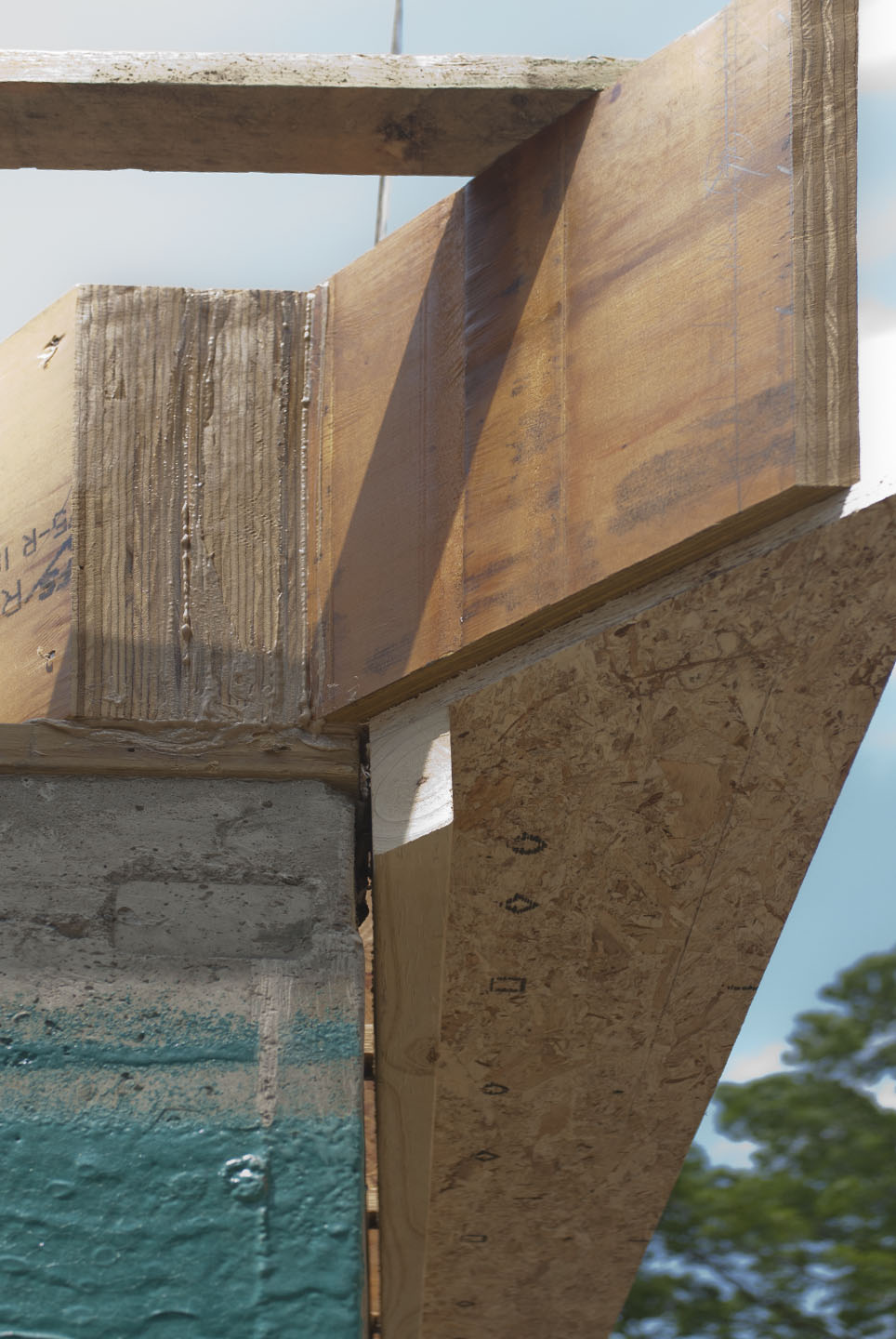 The two-by-four lumber under the soffit is an attachment point for the Neopor blocks of rigid foam insulation. The blocks will be notched out to fit. All gaps will be filled with spray foam insulation.
The two-by-four lumber under the soffit is an attachment point for the Neopor blocks of rigid foam insulation. The blocks will be notched out to fit. All gaps will be filled with spray foam insulation.
Installing the curtain drain
 This drainage trench will help to keep the gravel dry in the raised bed septic system. It will catch and divert water from the house site so it runs away from the septic field.
This drainage trench will help to keep the gravel dry in the raised bed septic system. It will catch and divert water from the house site so it runs away from the septic field. 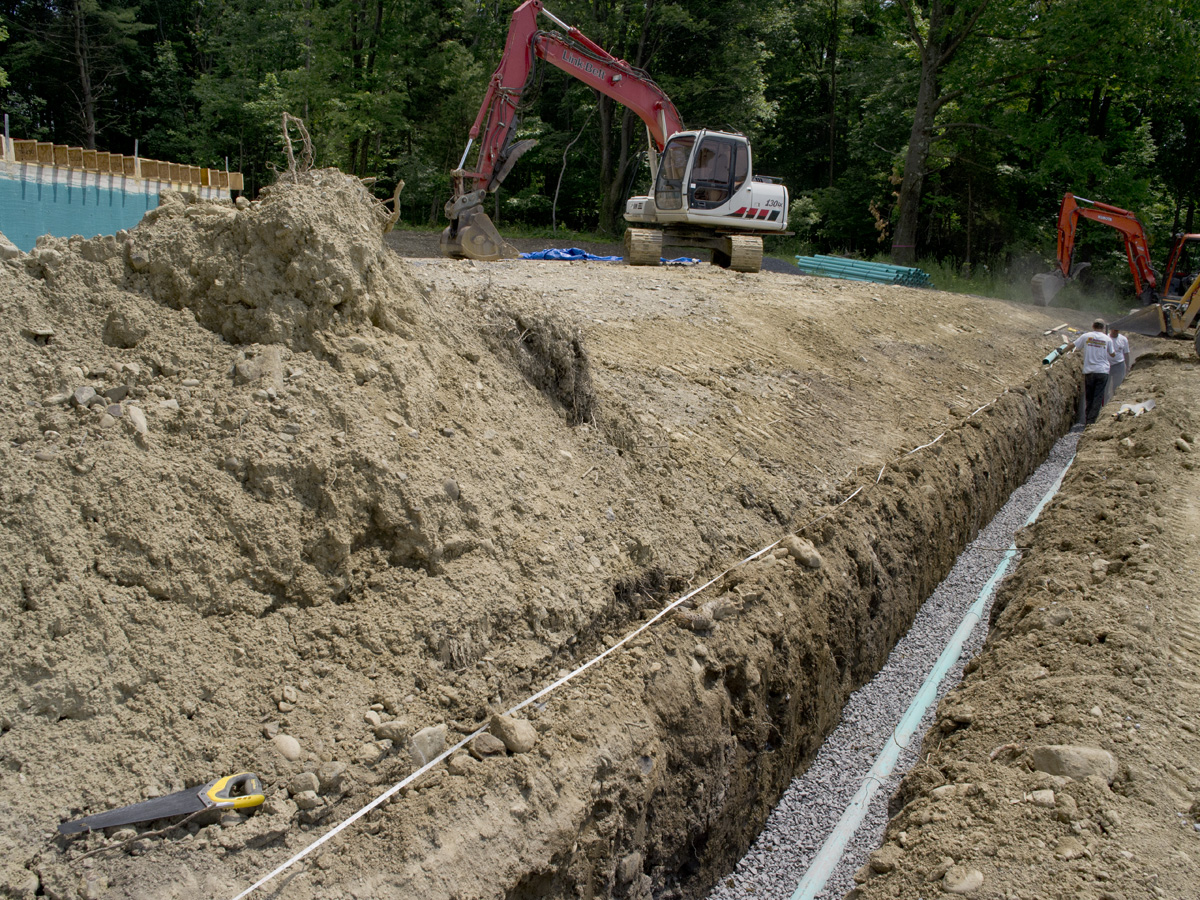 The trench is drained by perforated pipe bedded in stone. The clay soil makes drainage more of a challenge than anyone expected.
The trench is drained by perforated pipe bedded in stone. The clay soil makes drainage more of a challenge than anyone expected.








